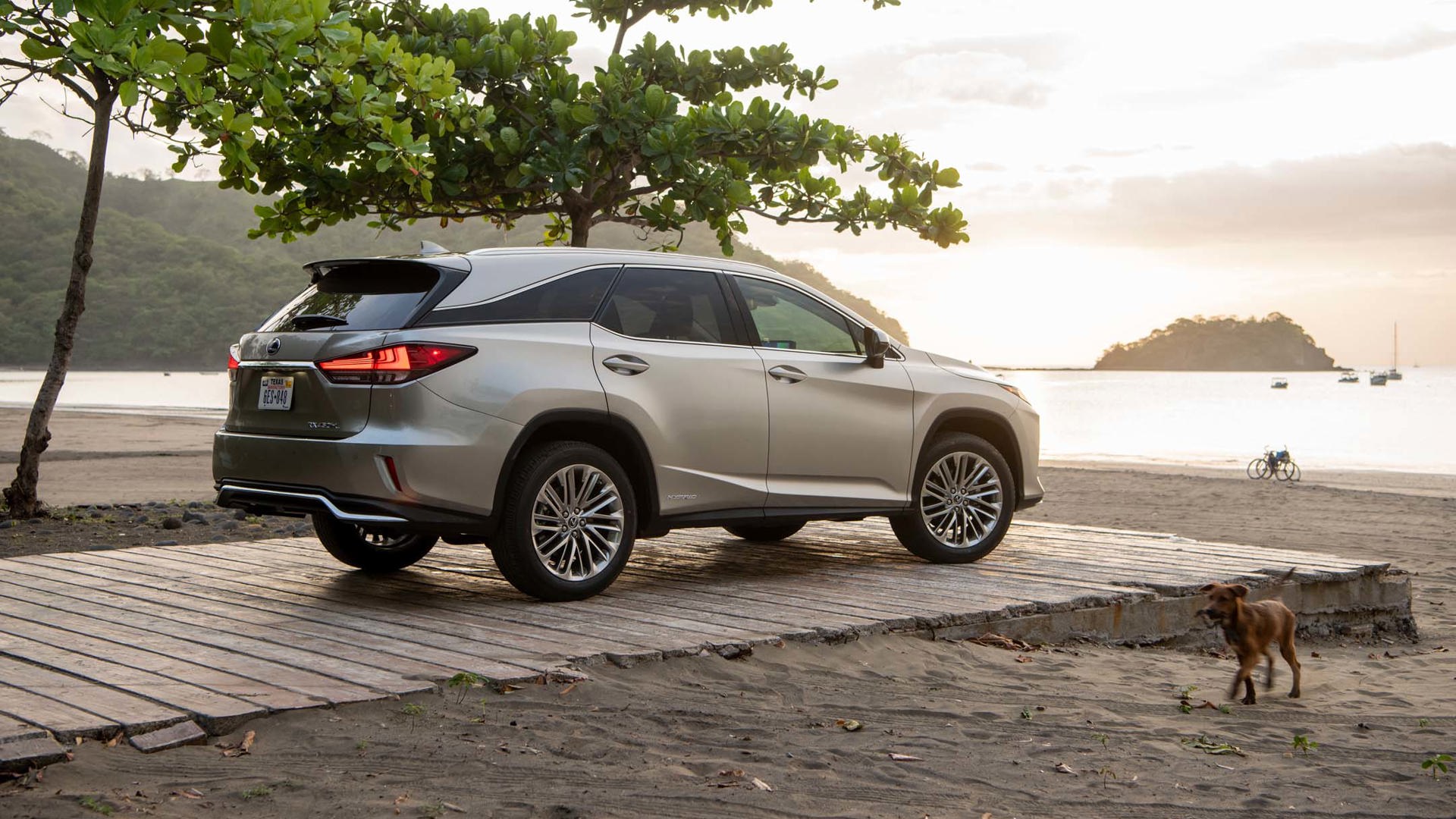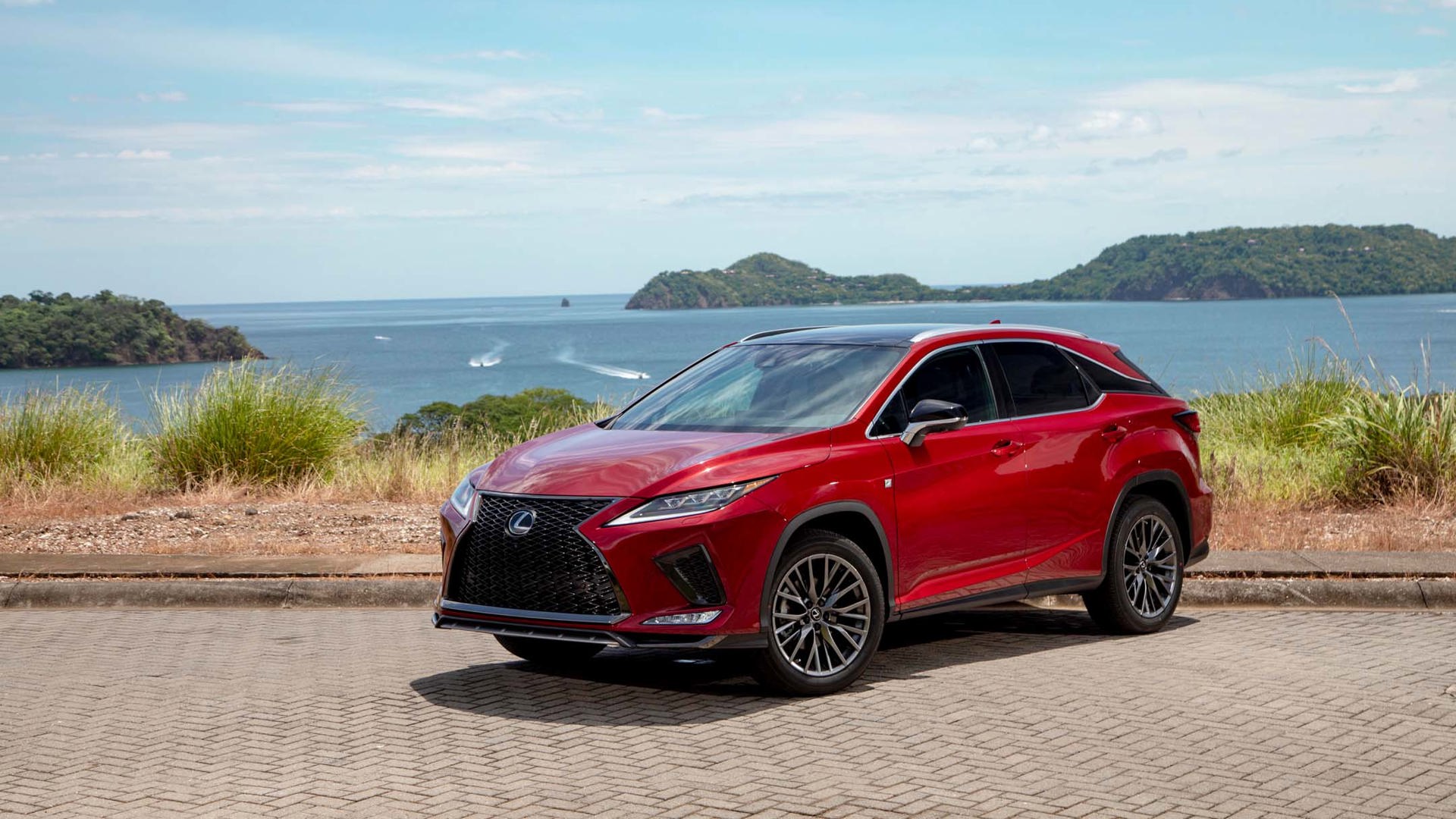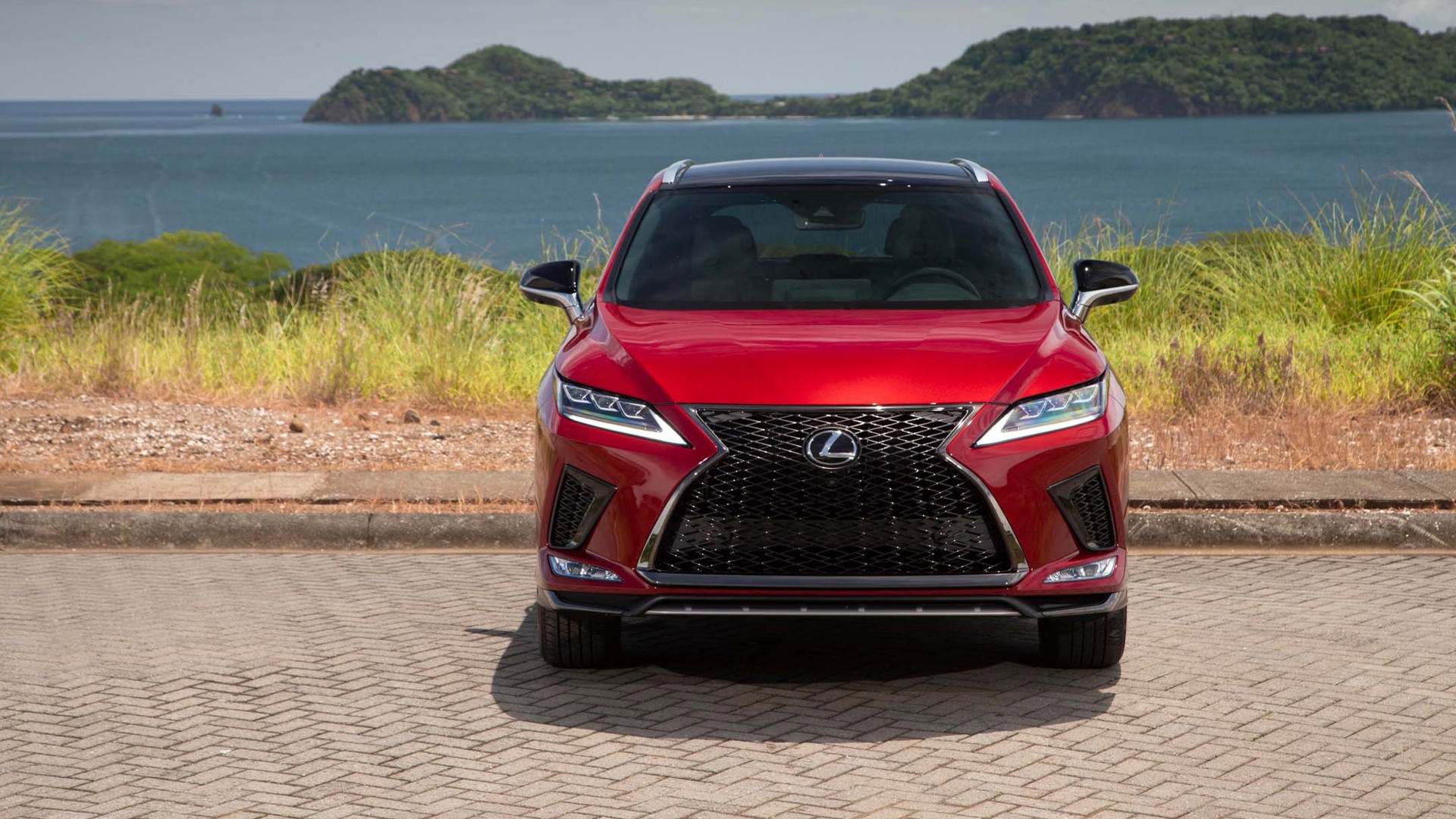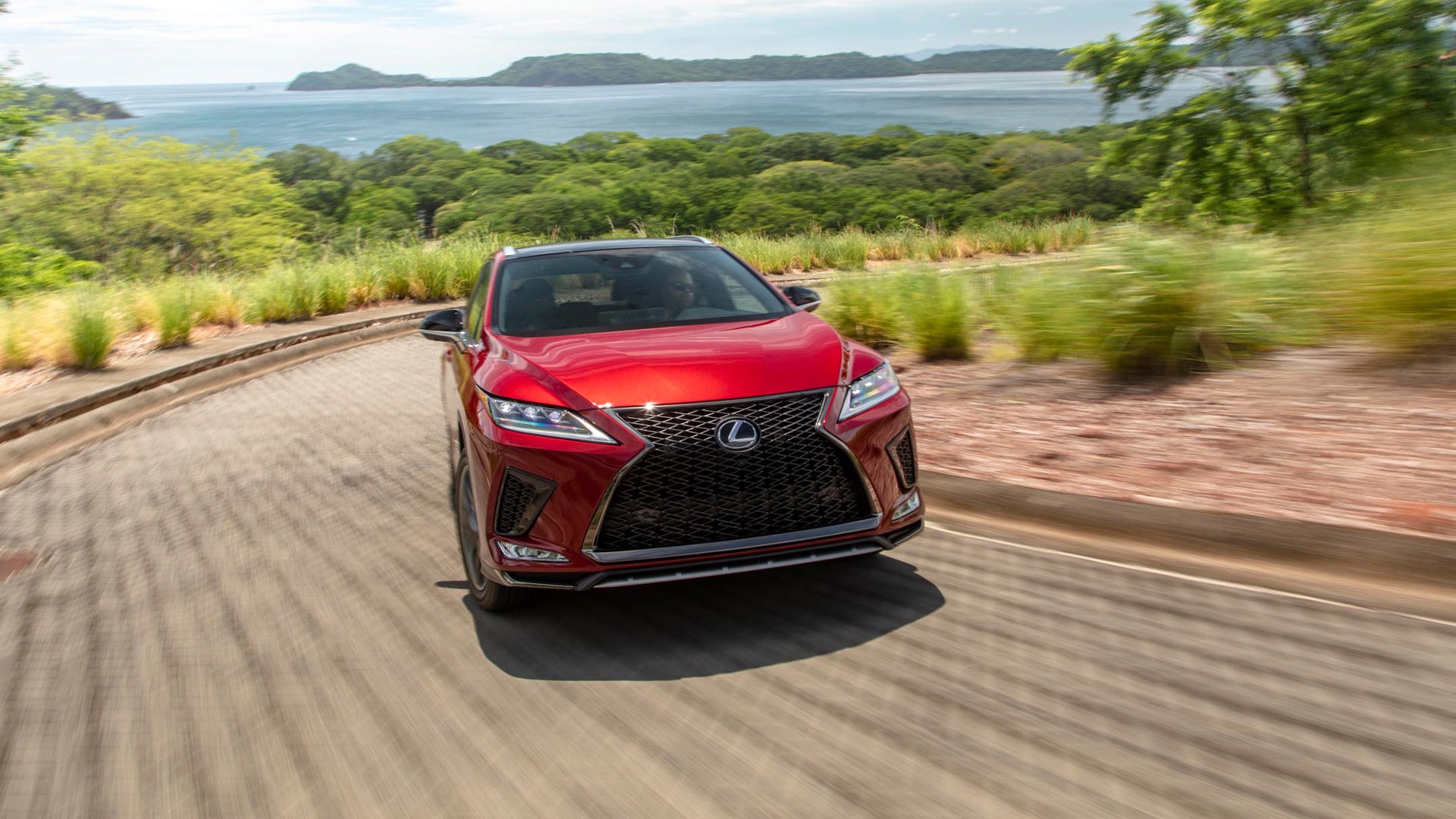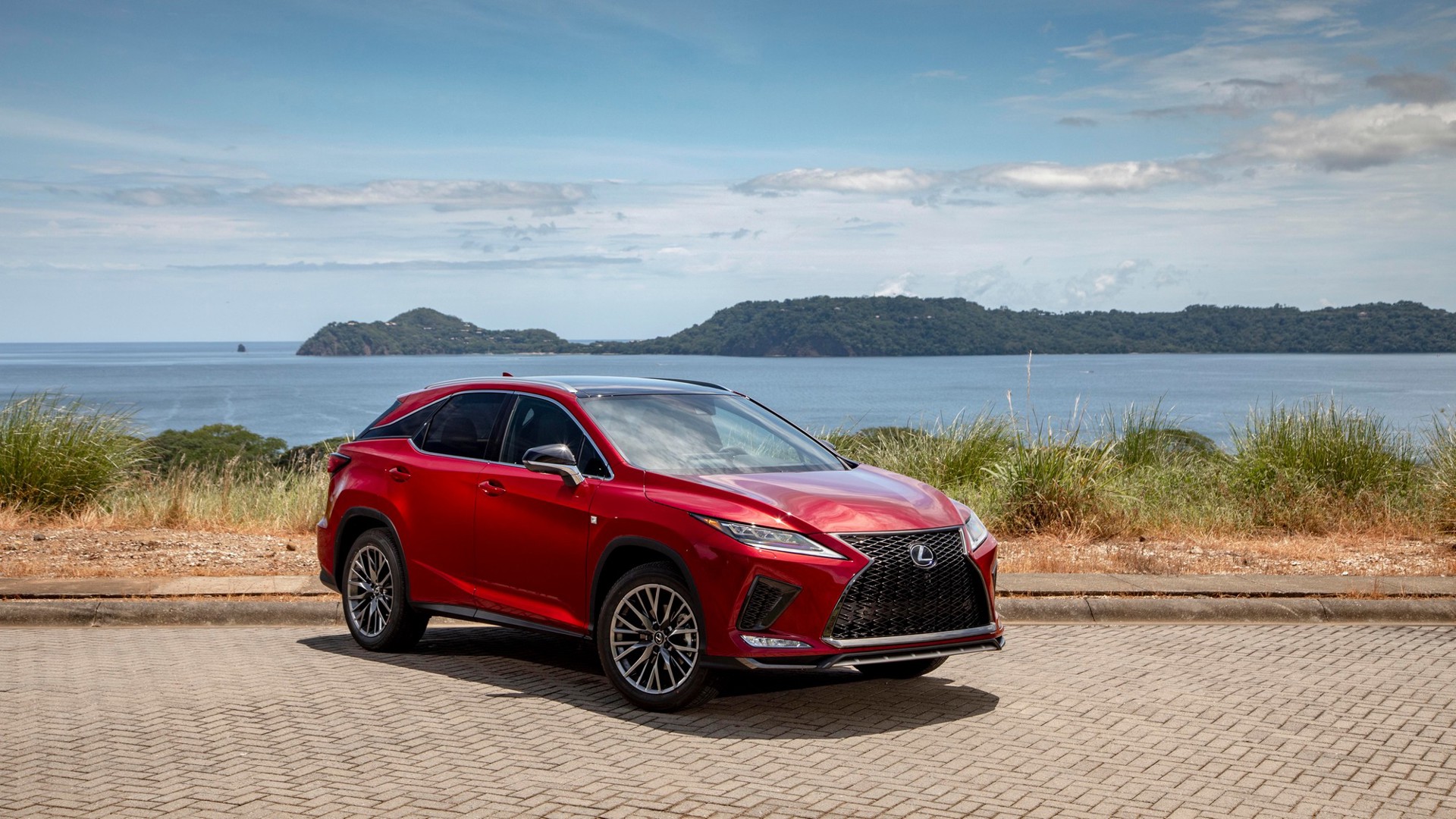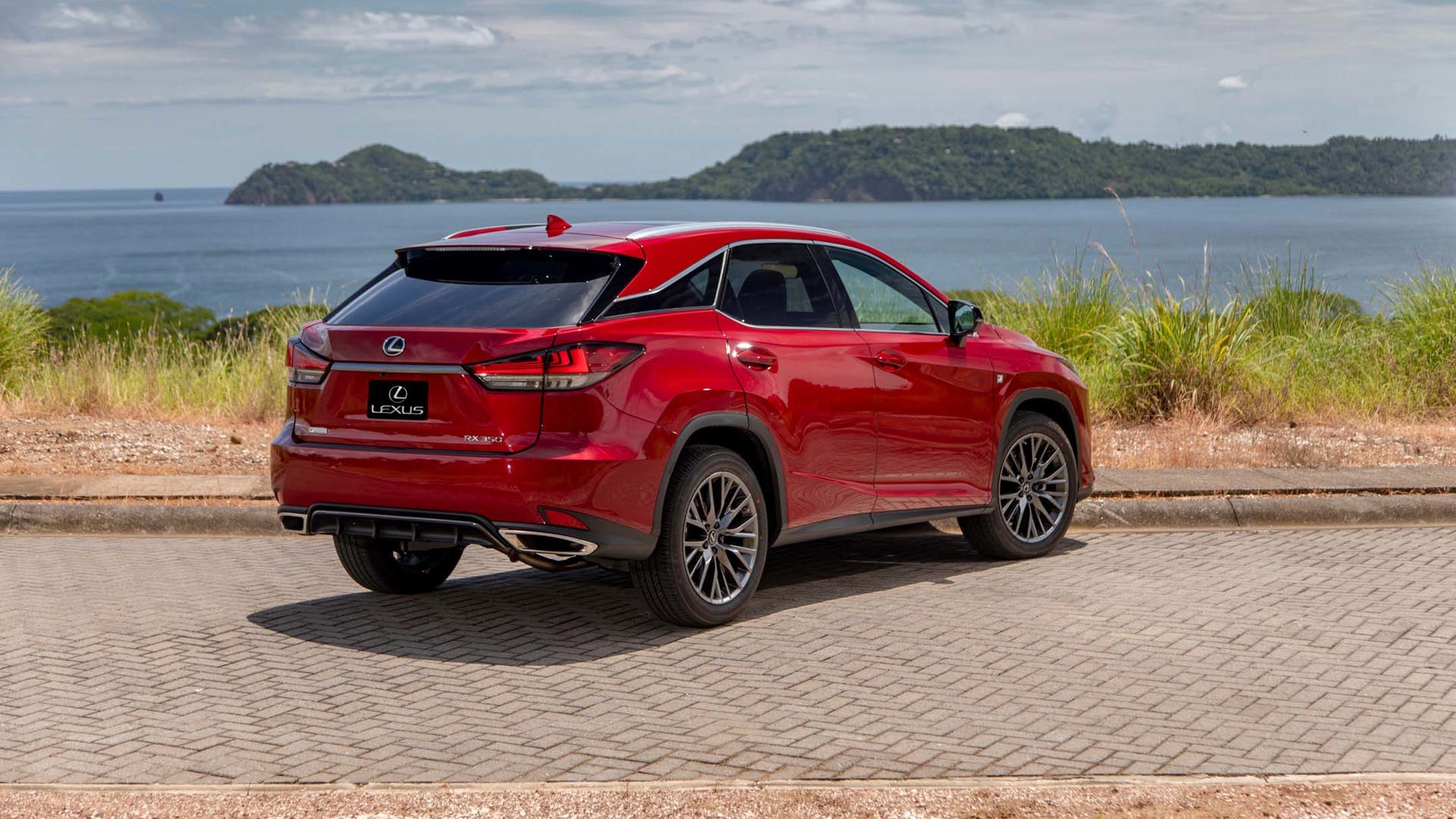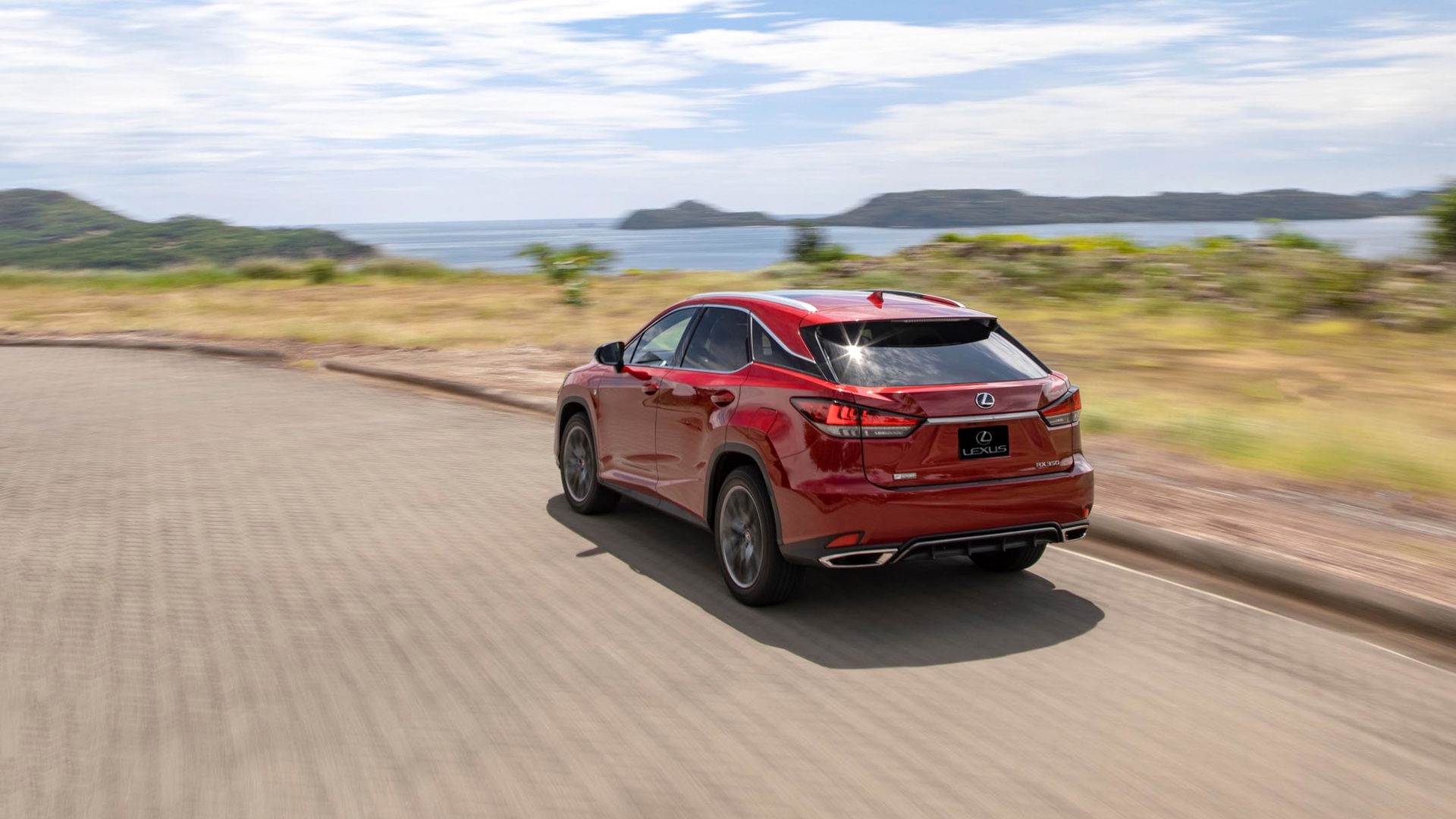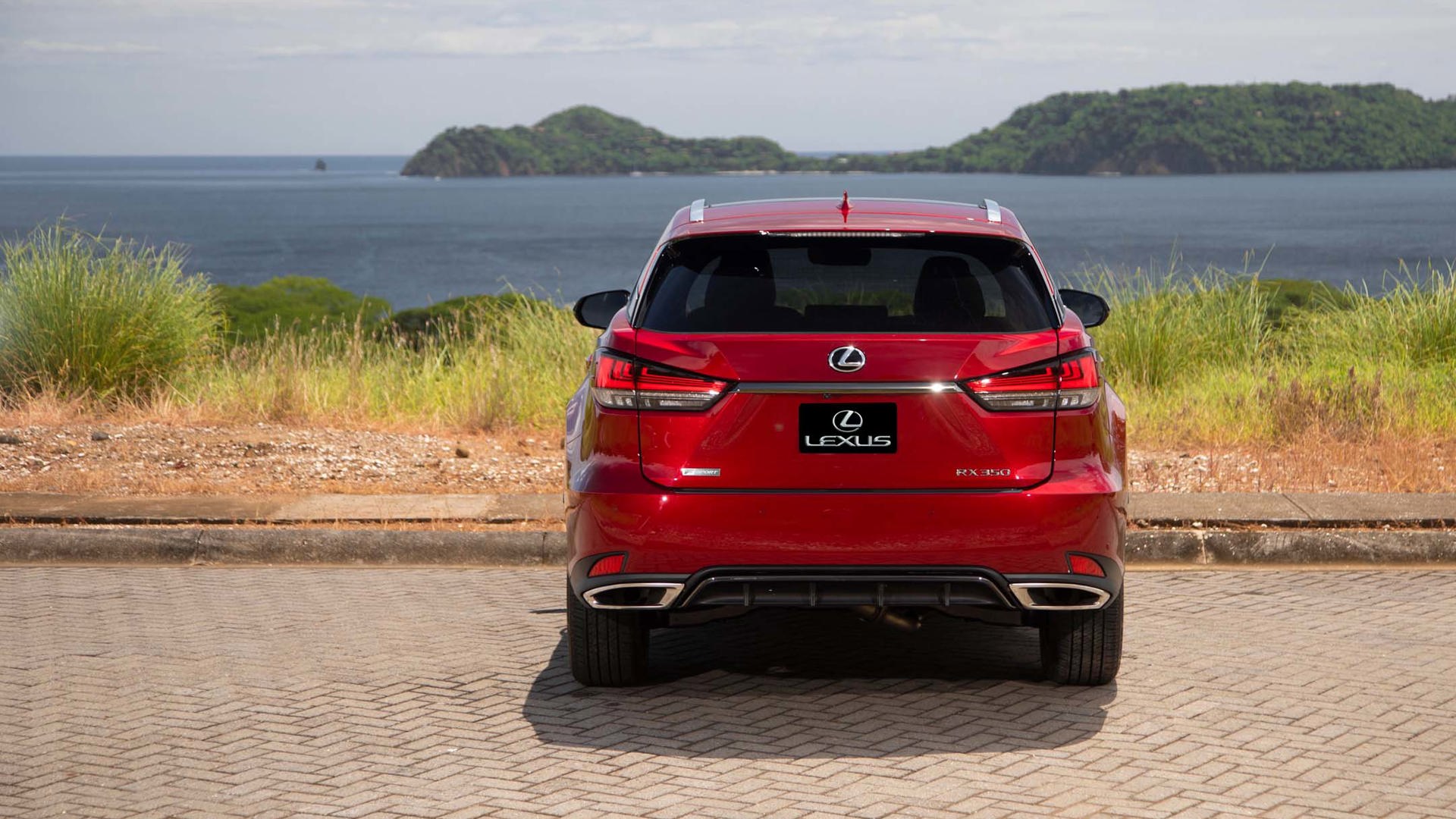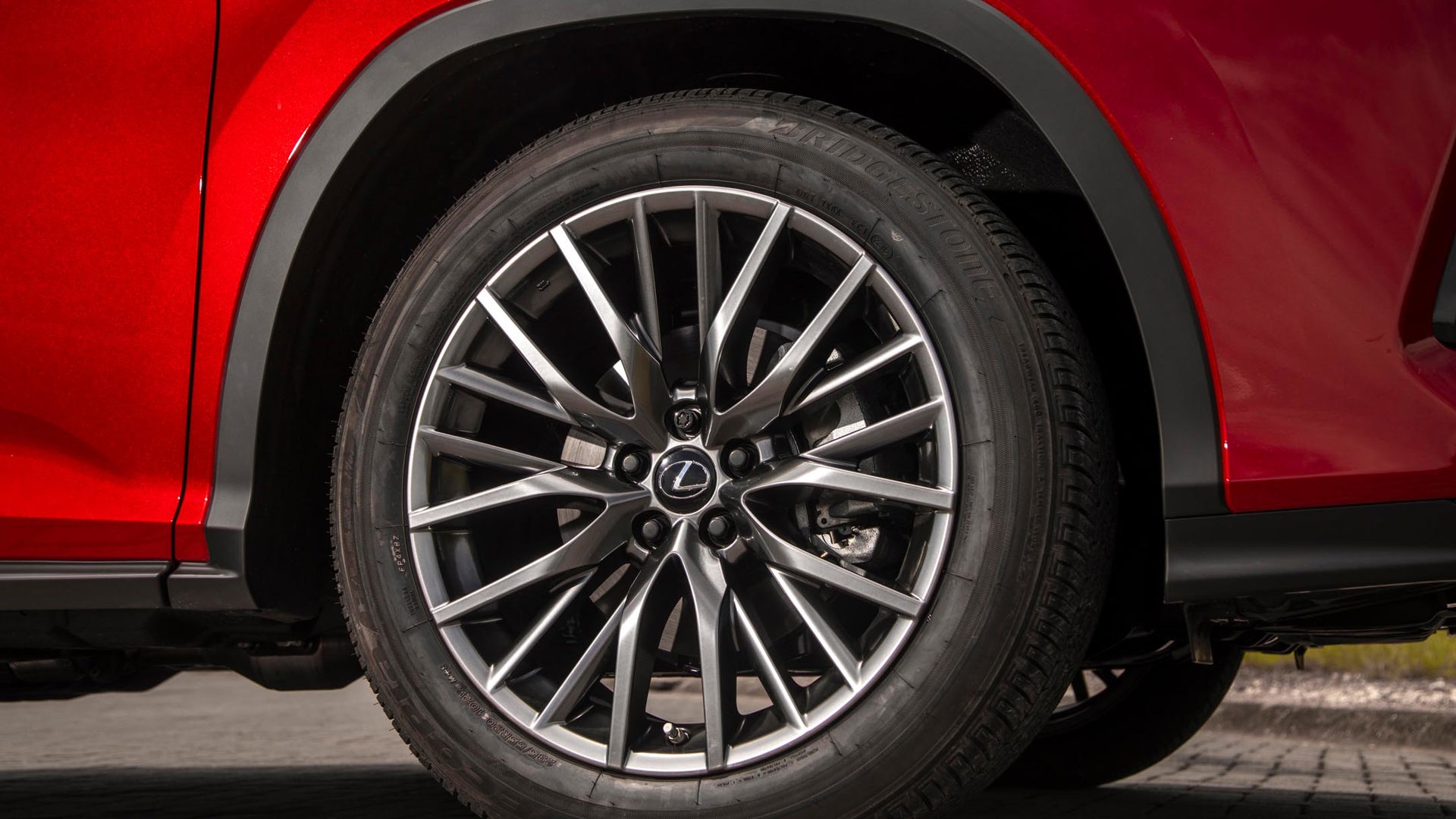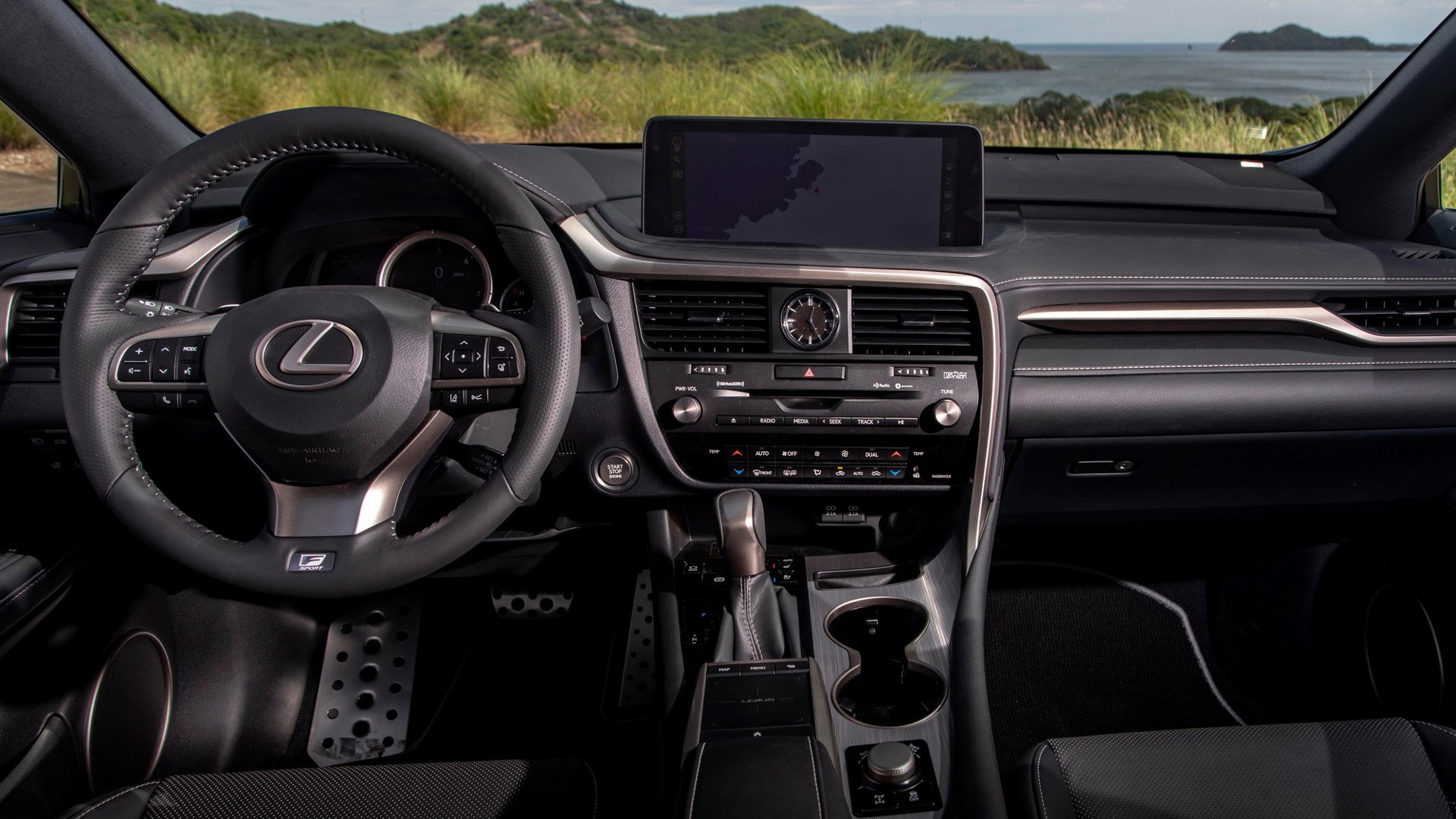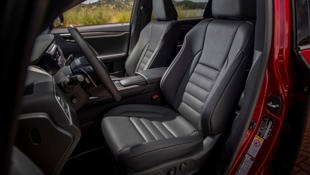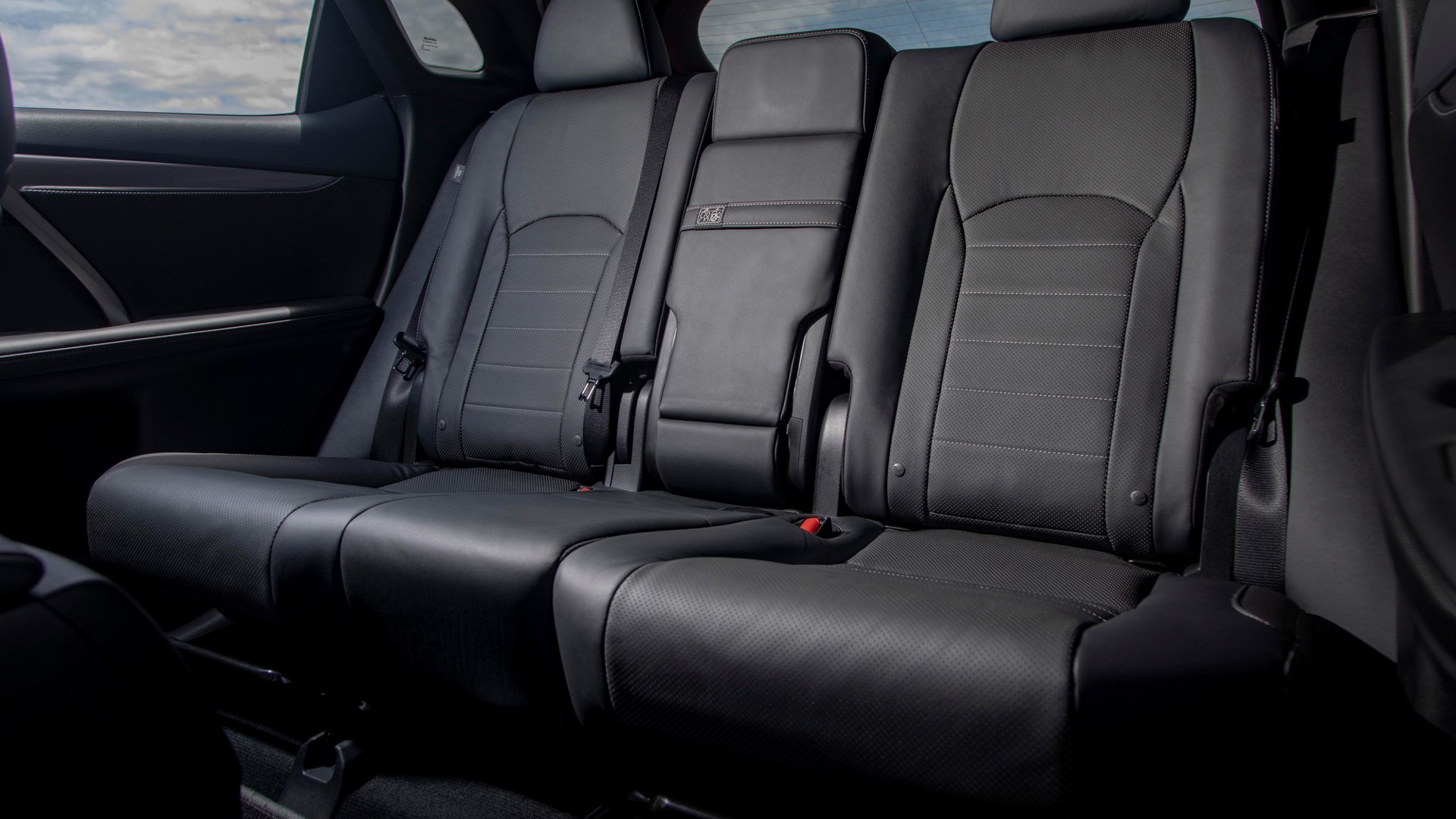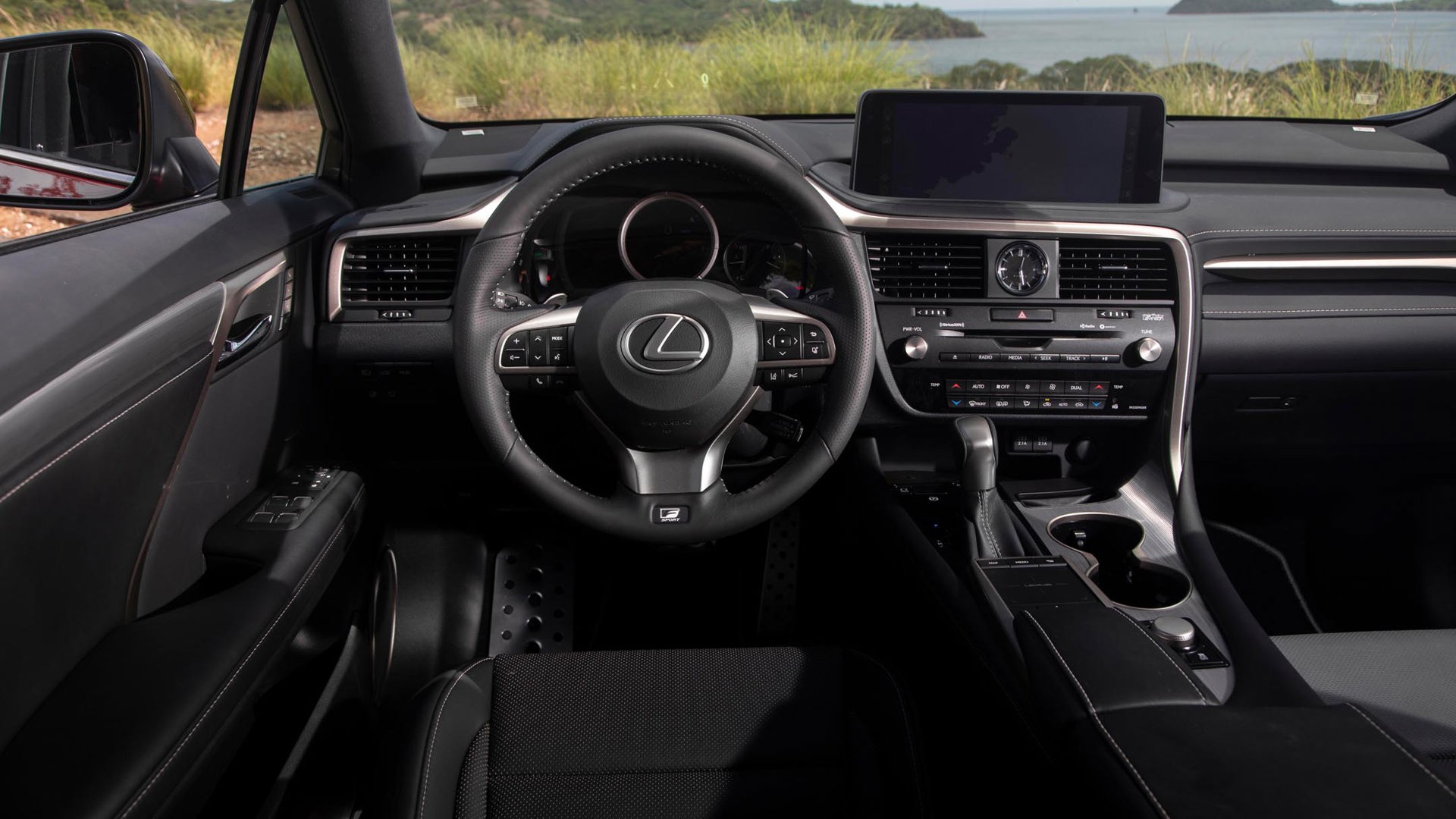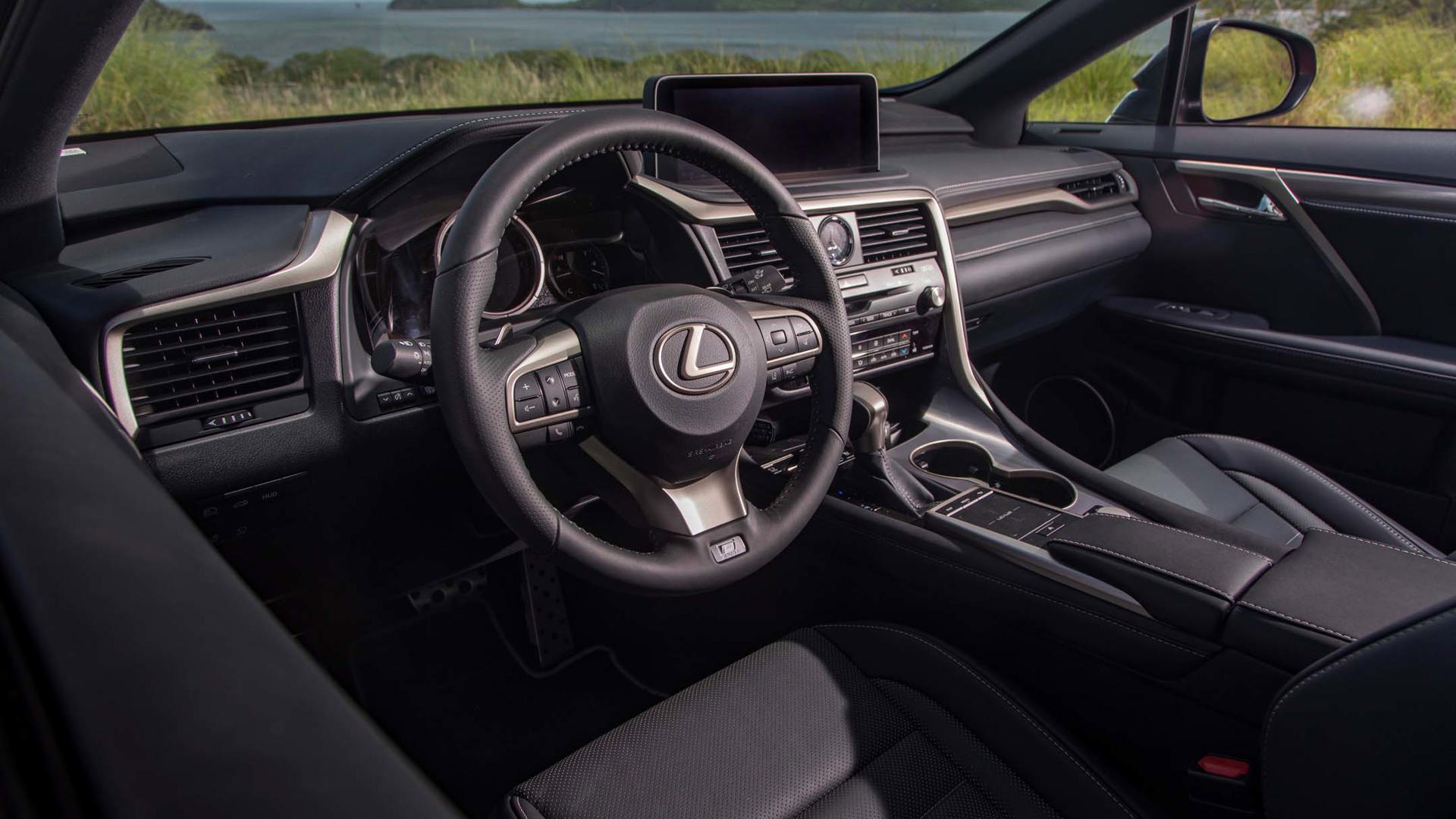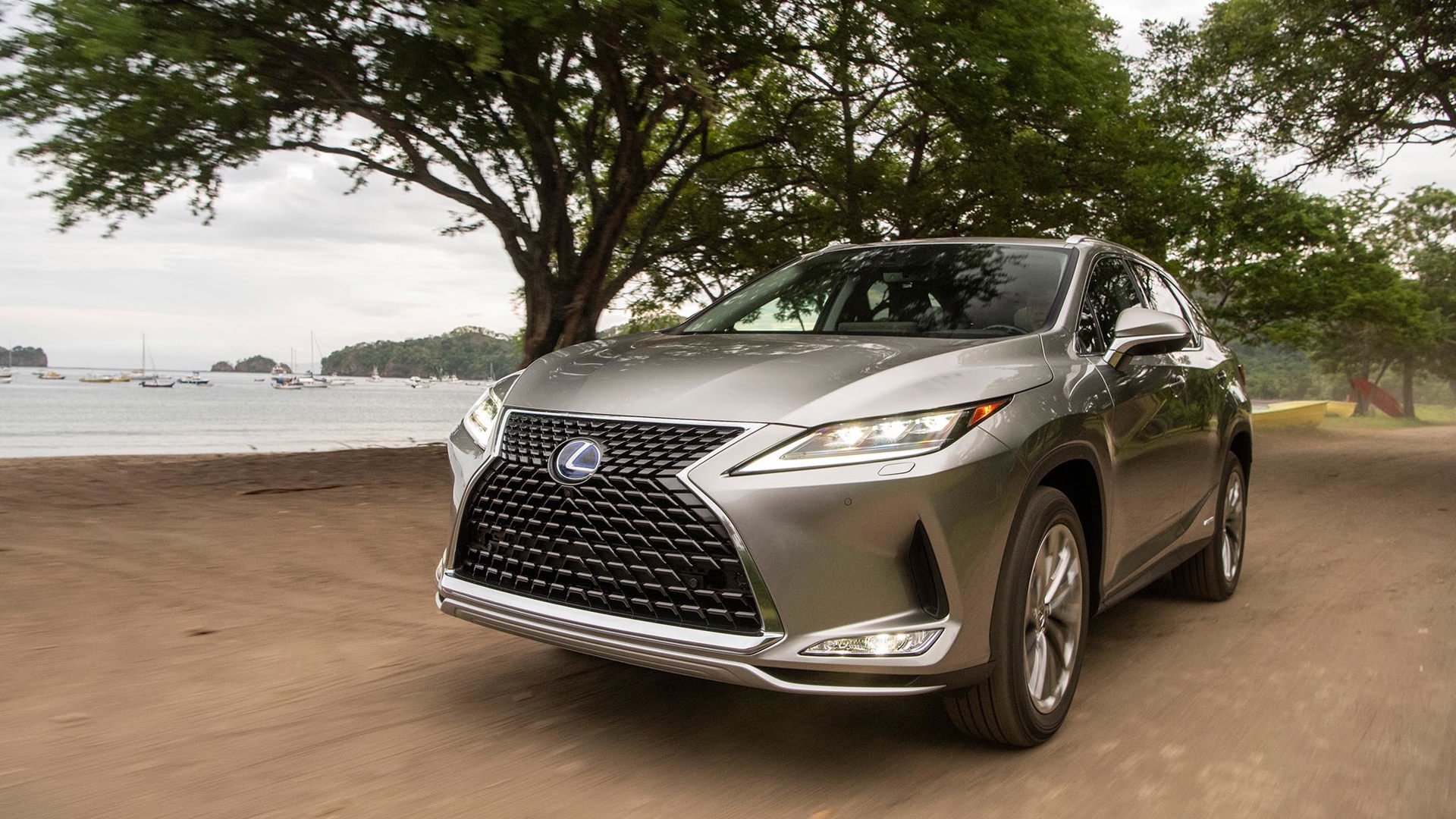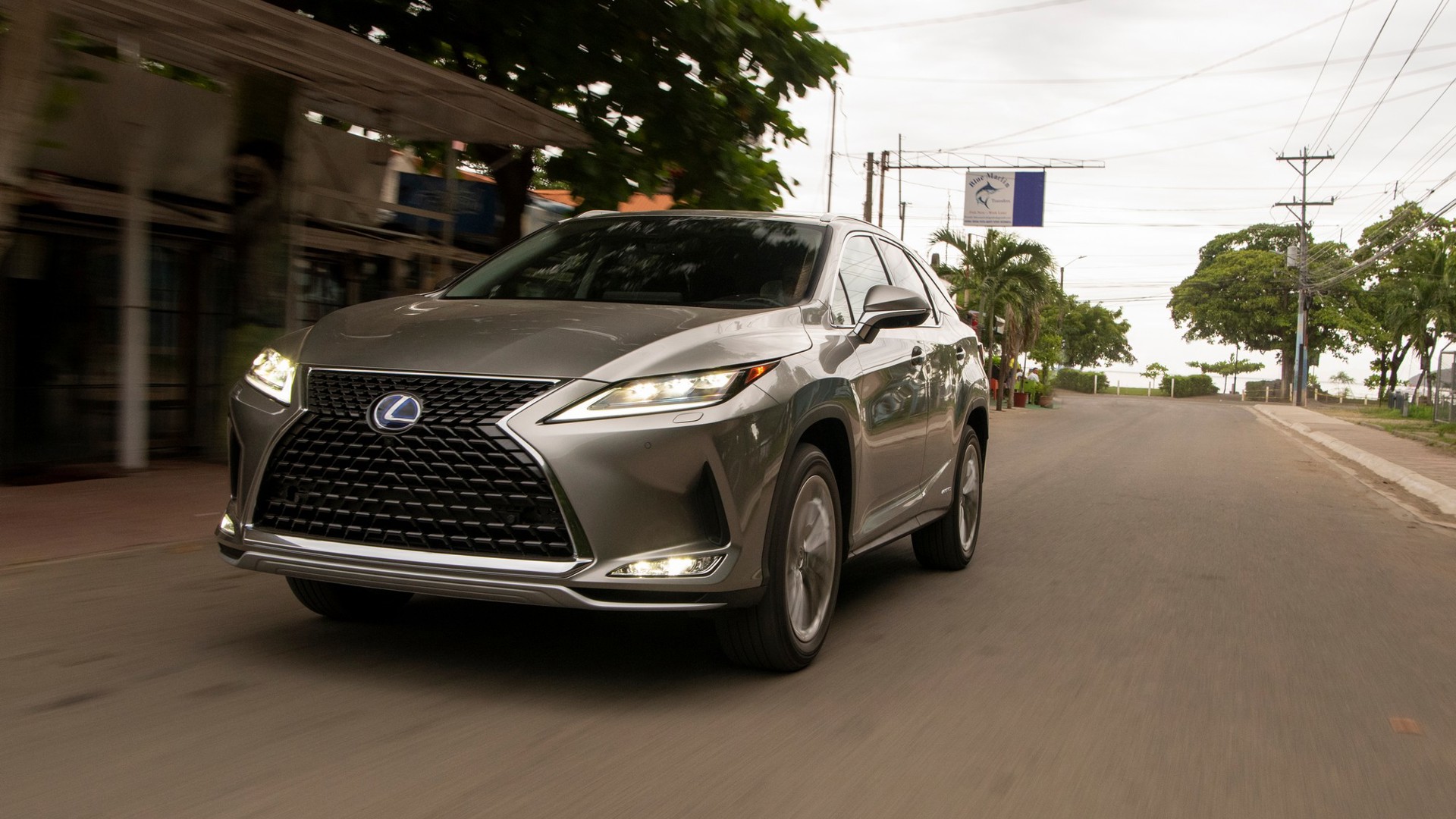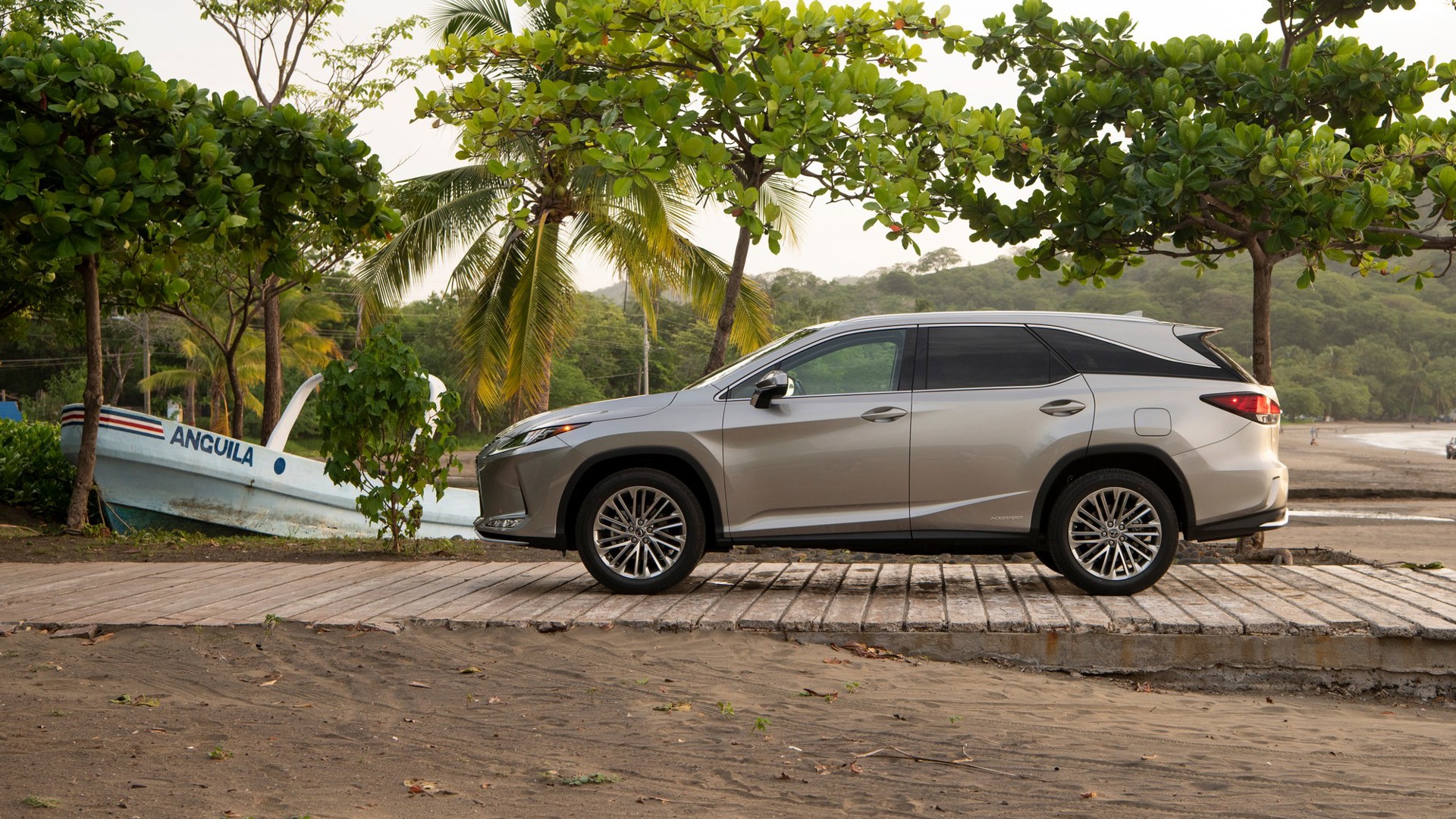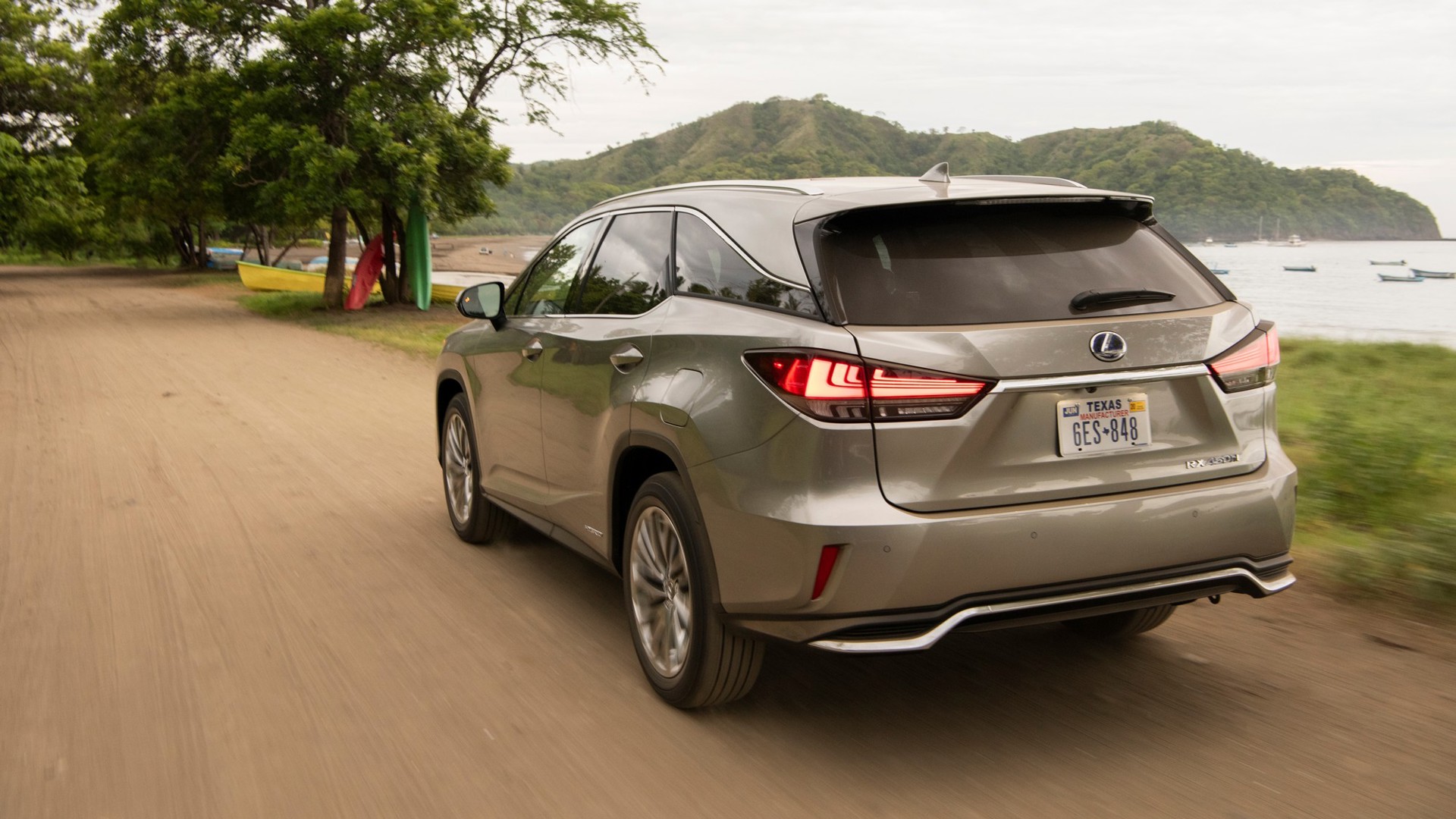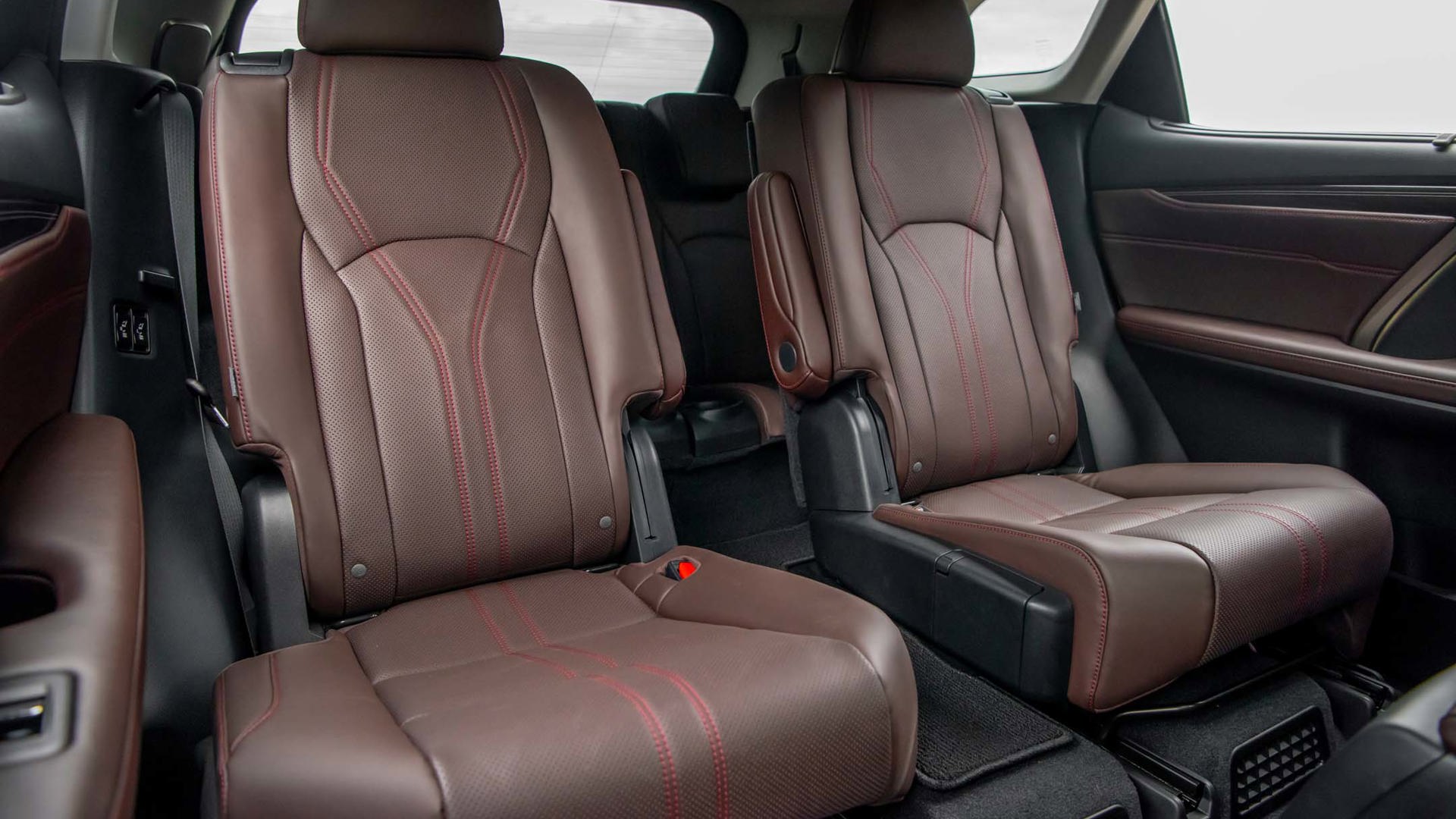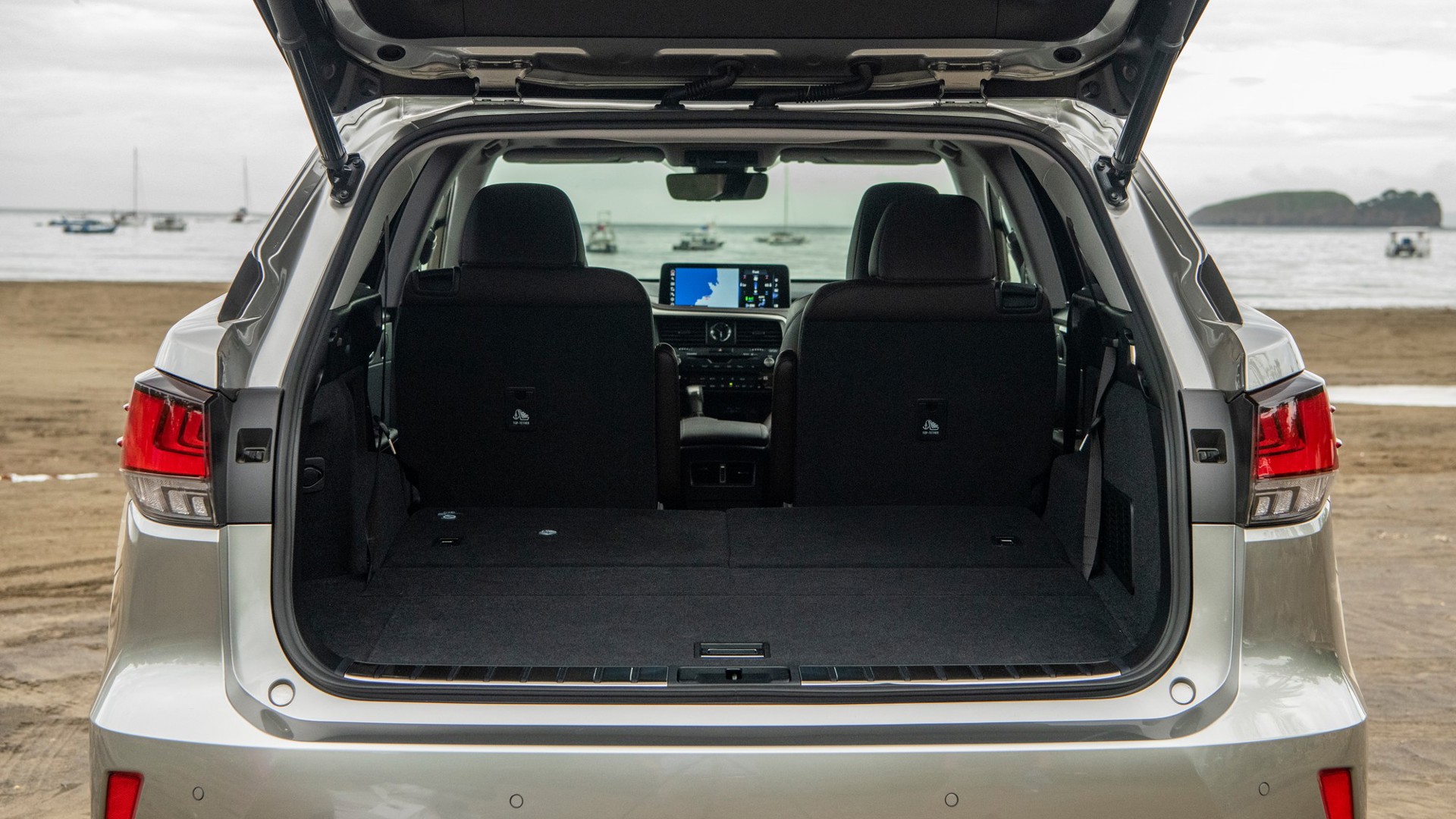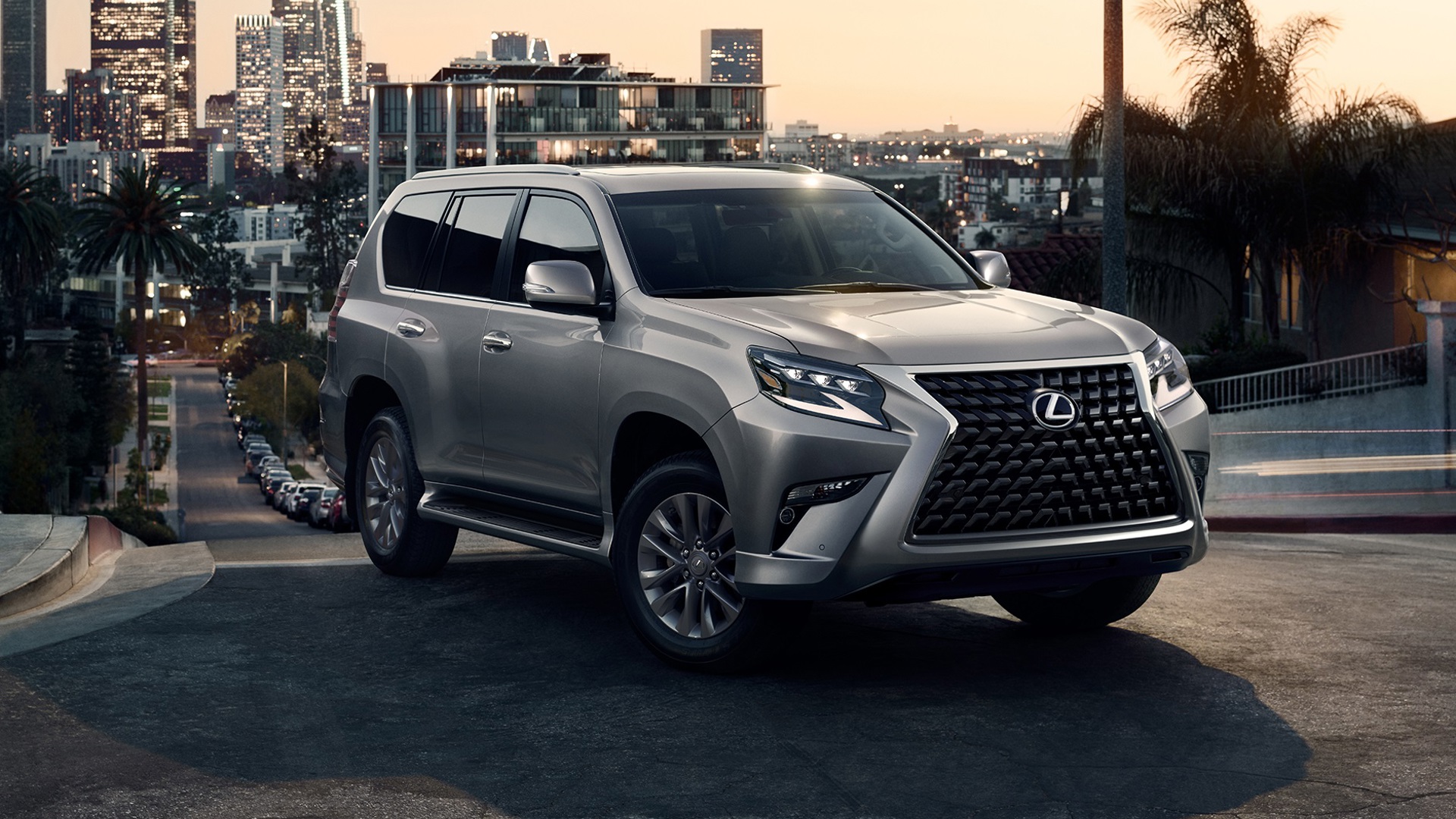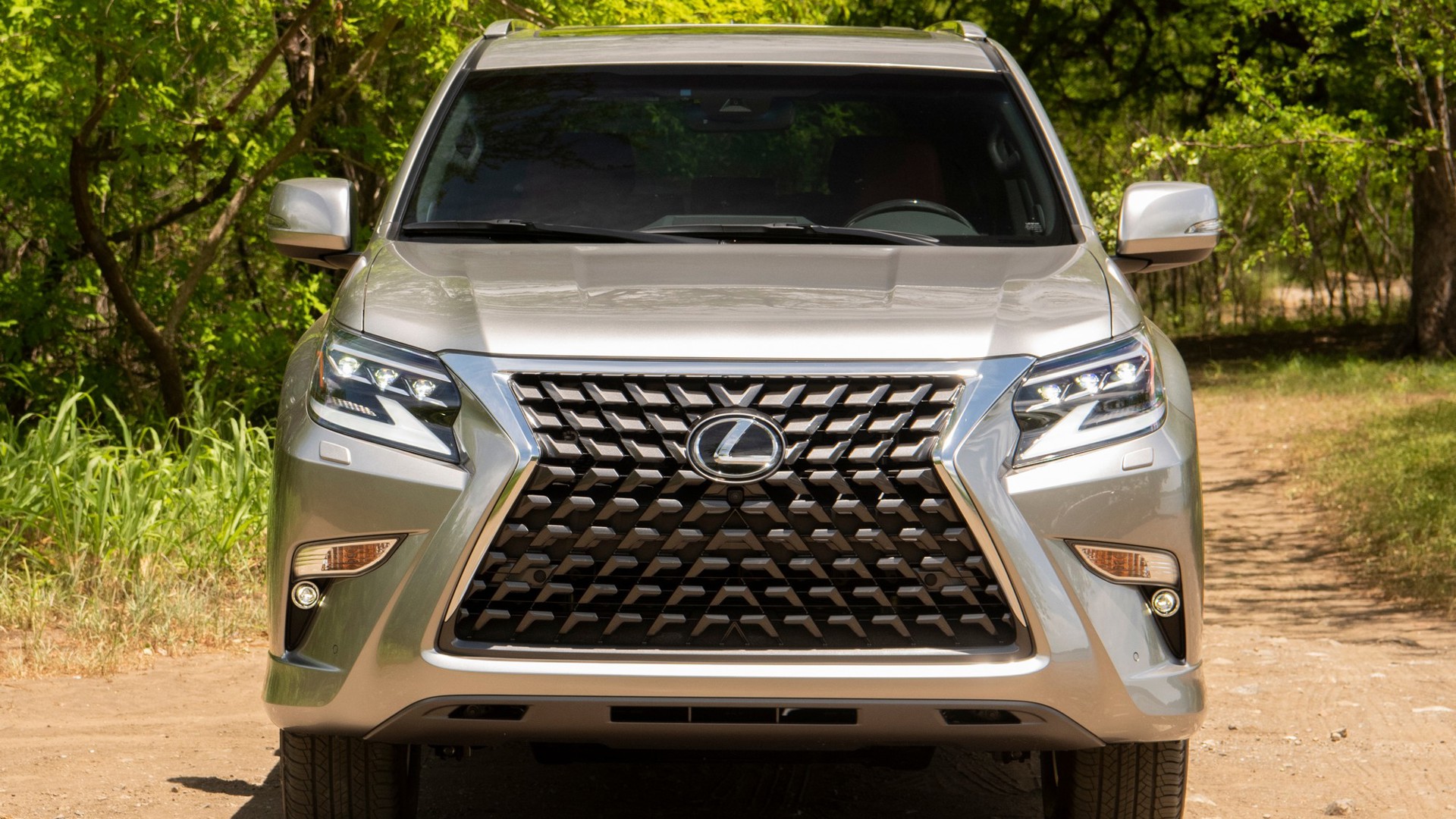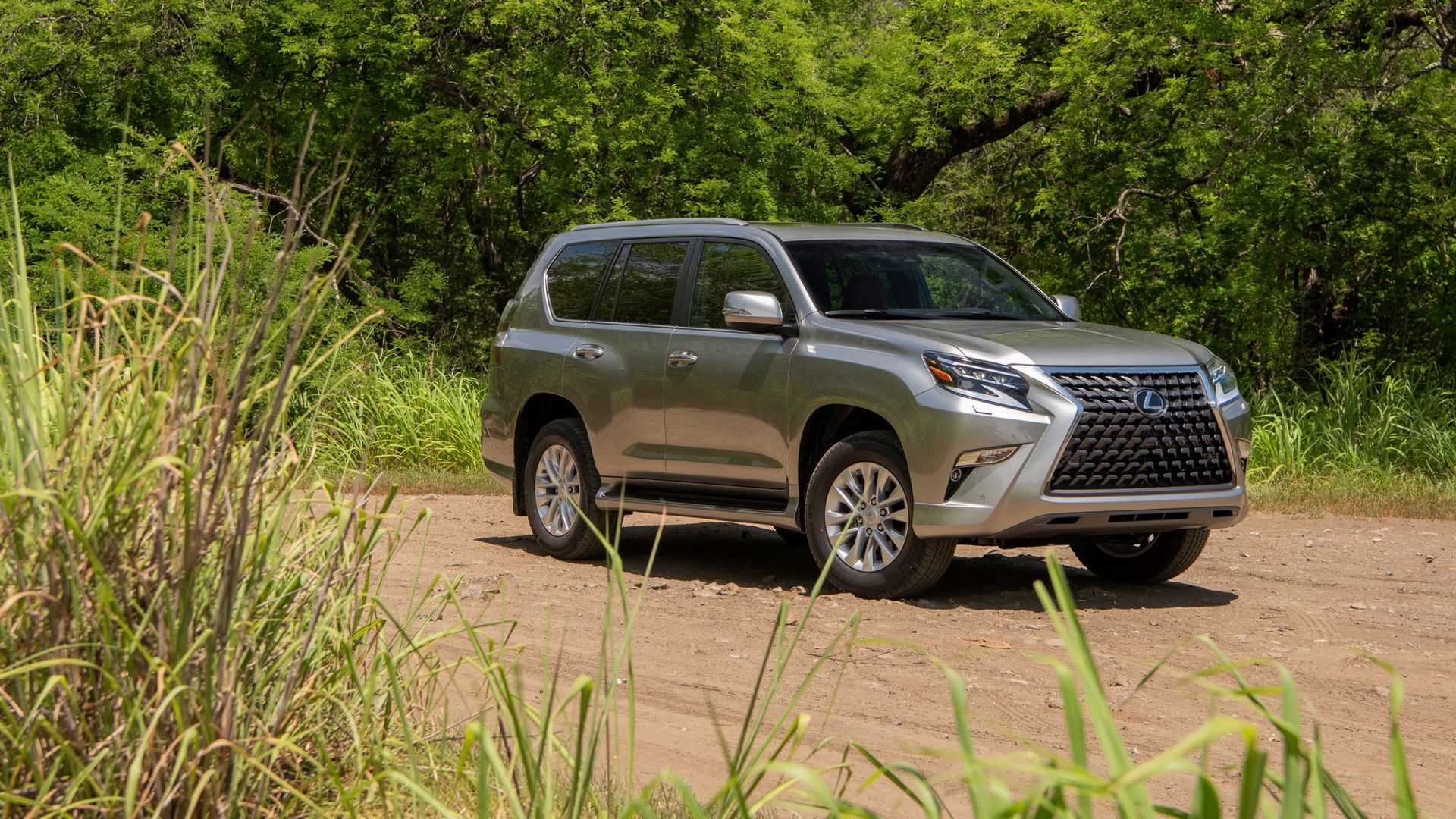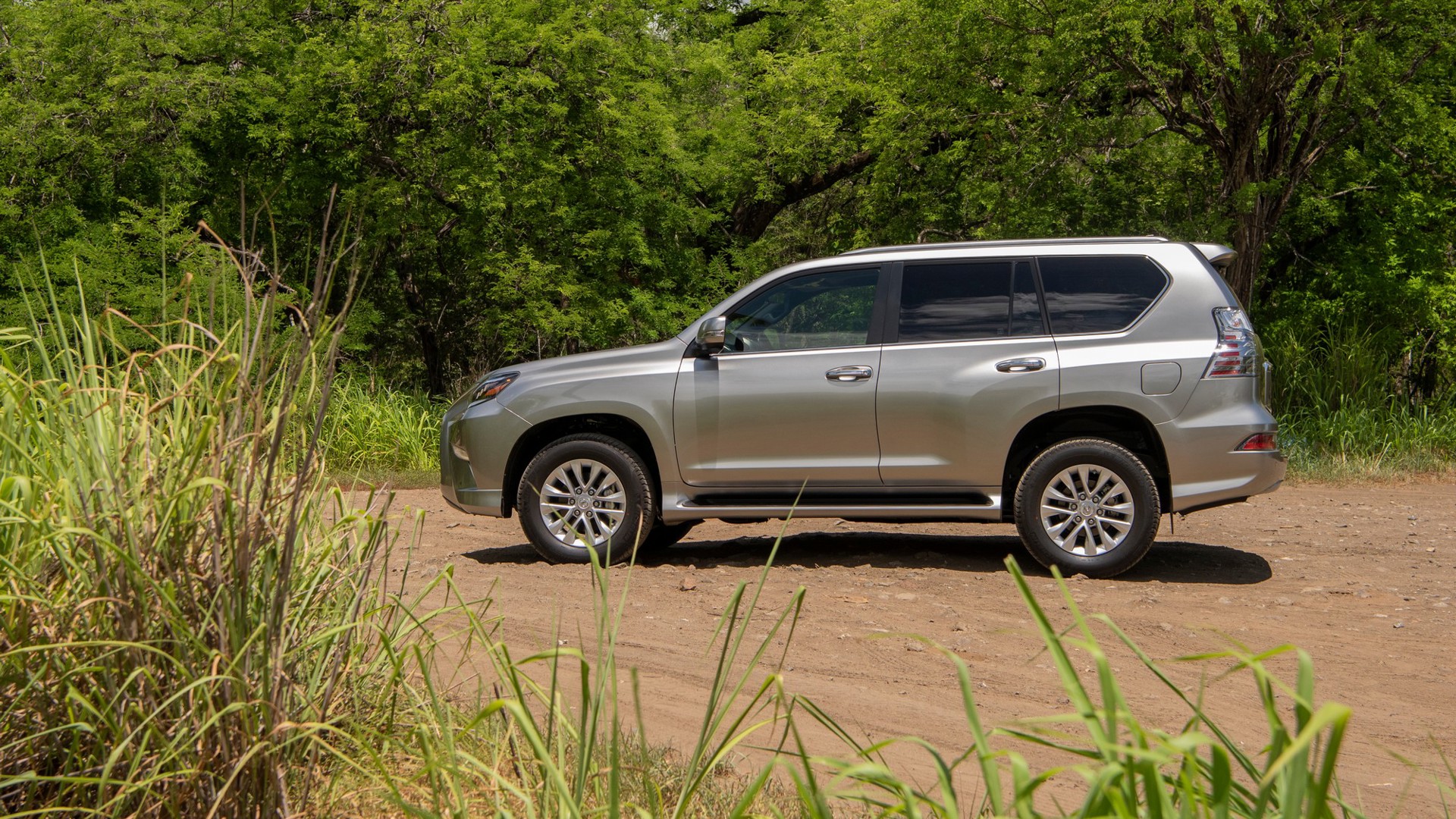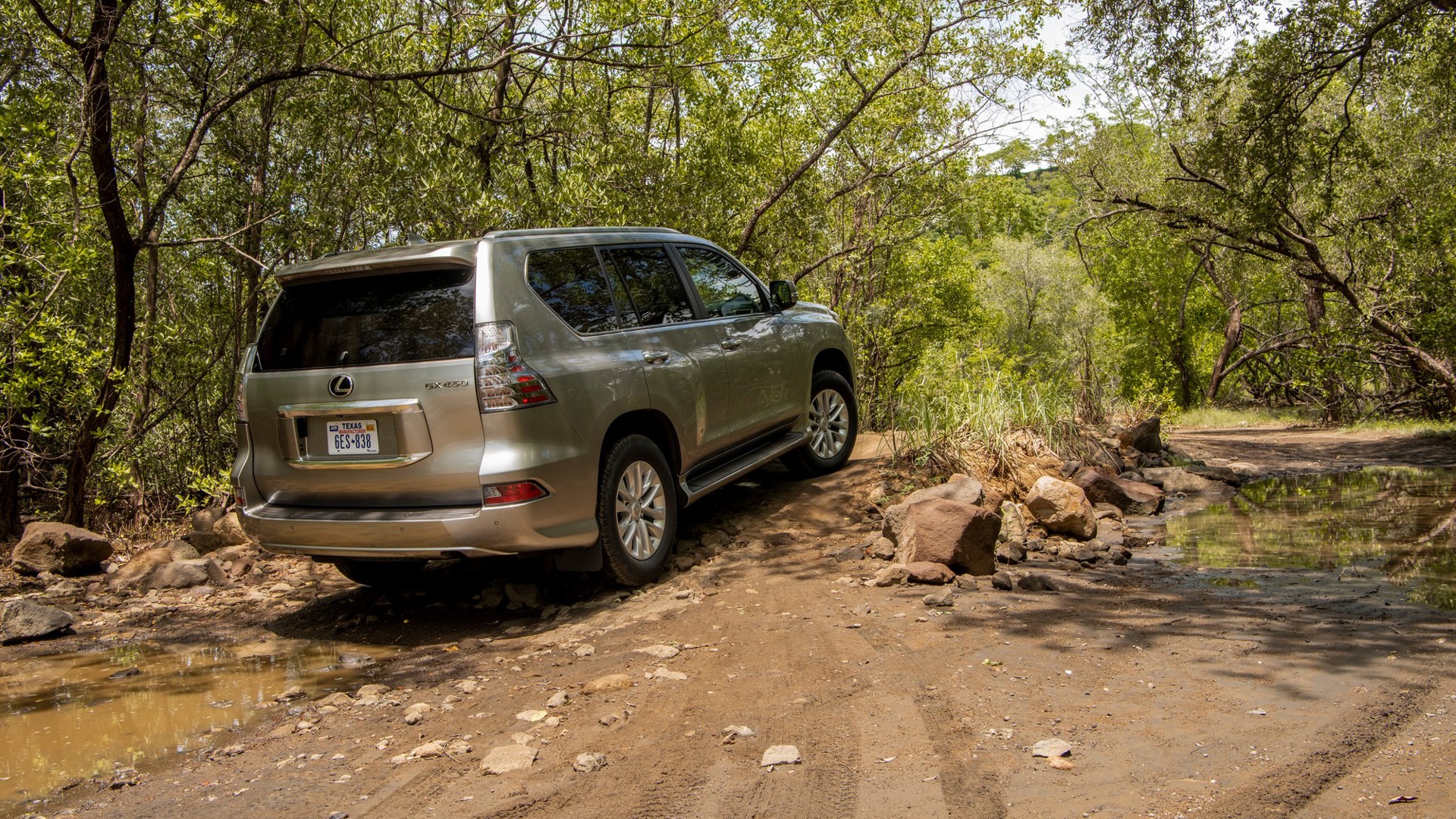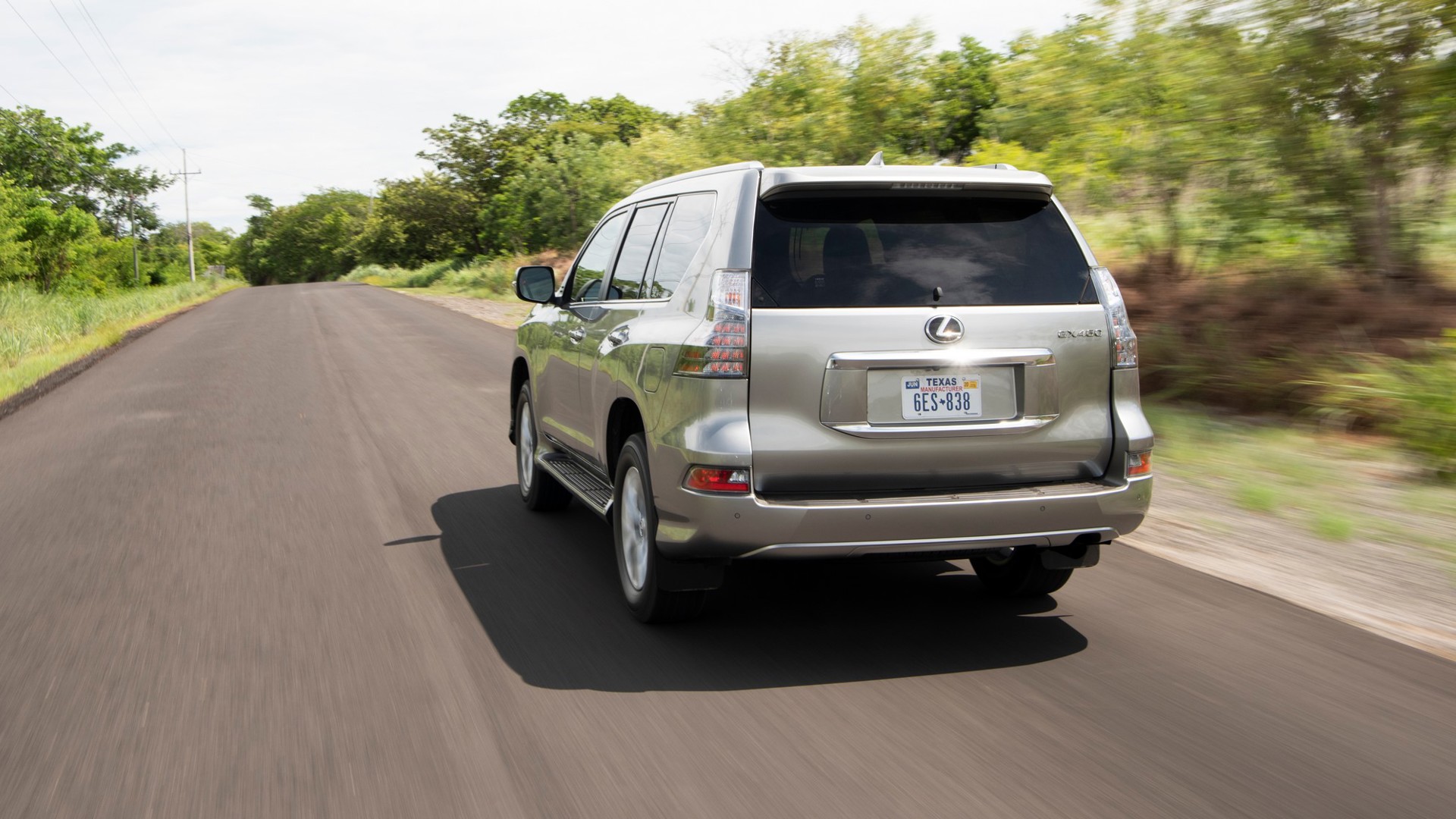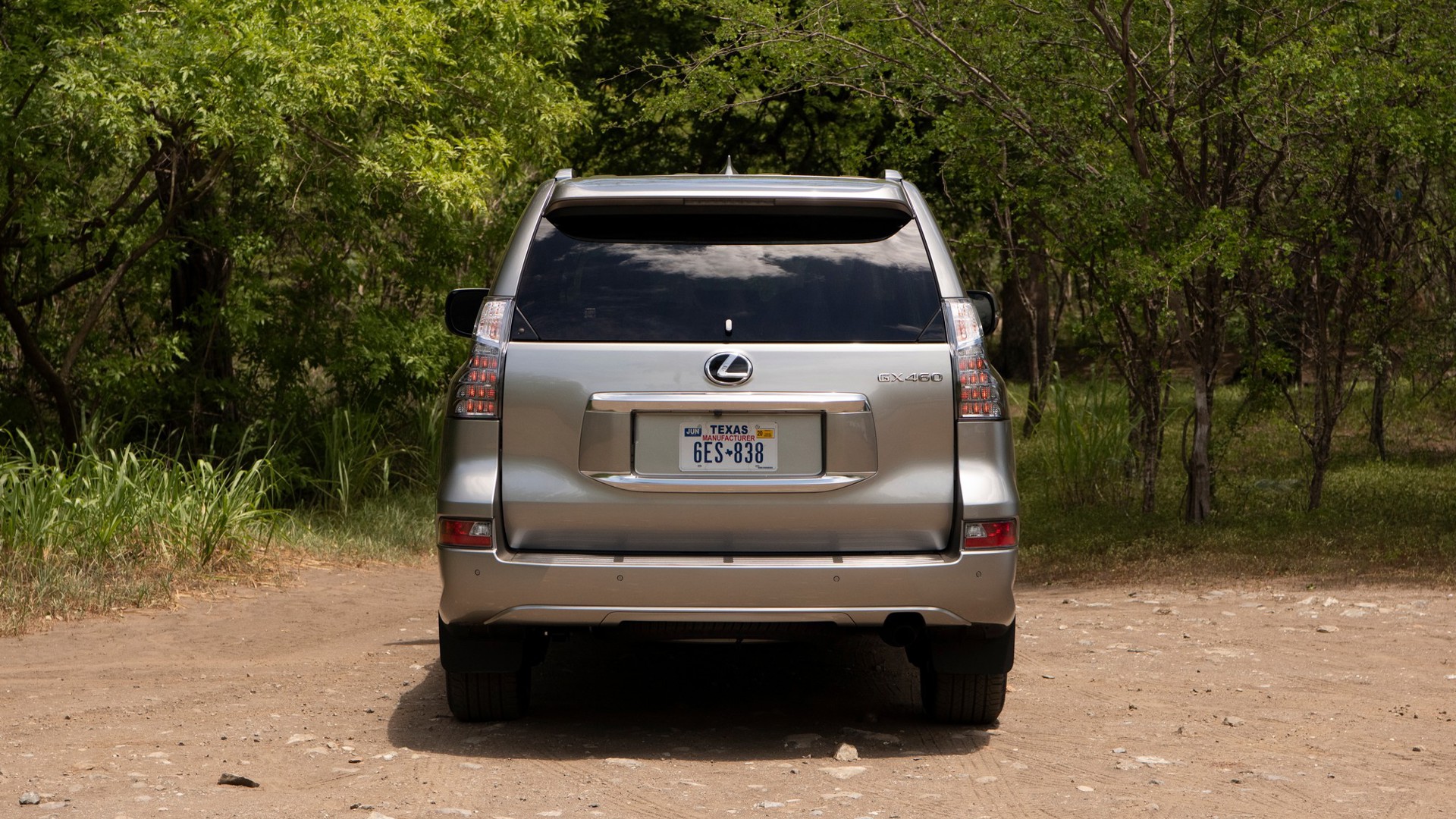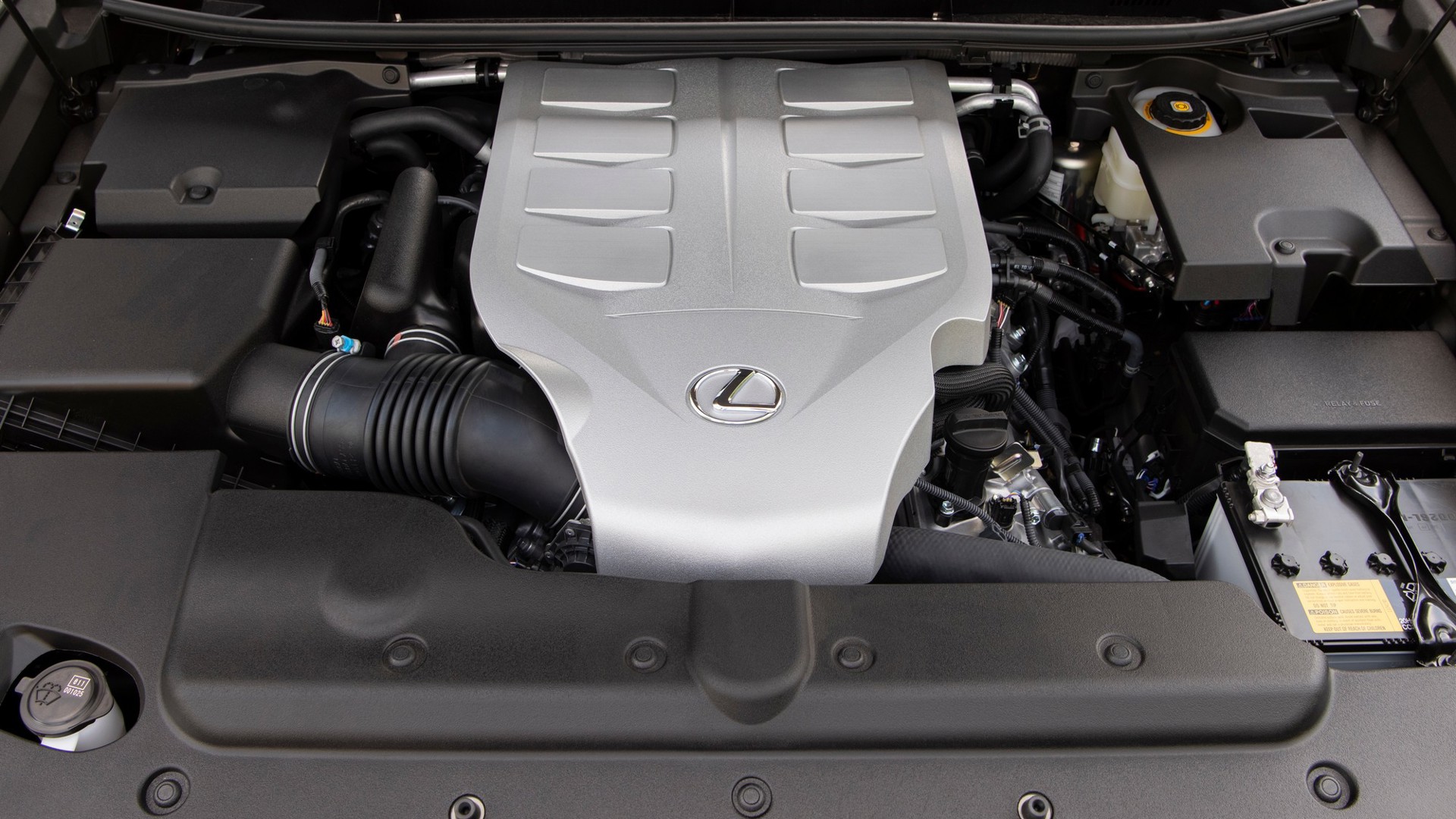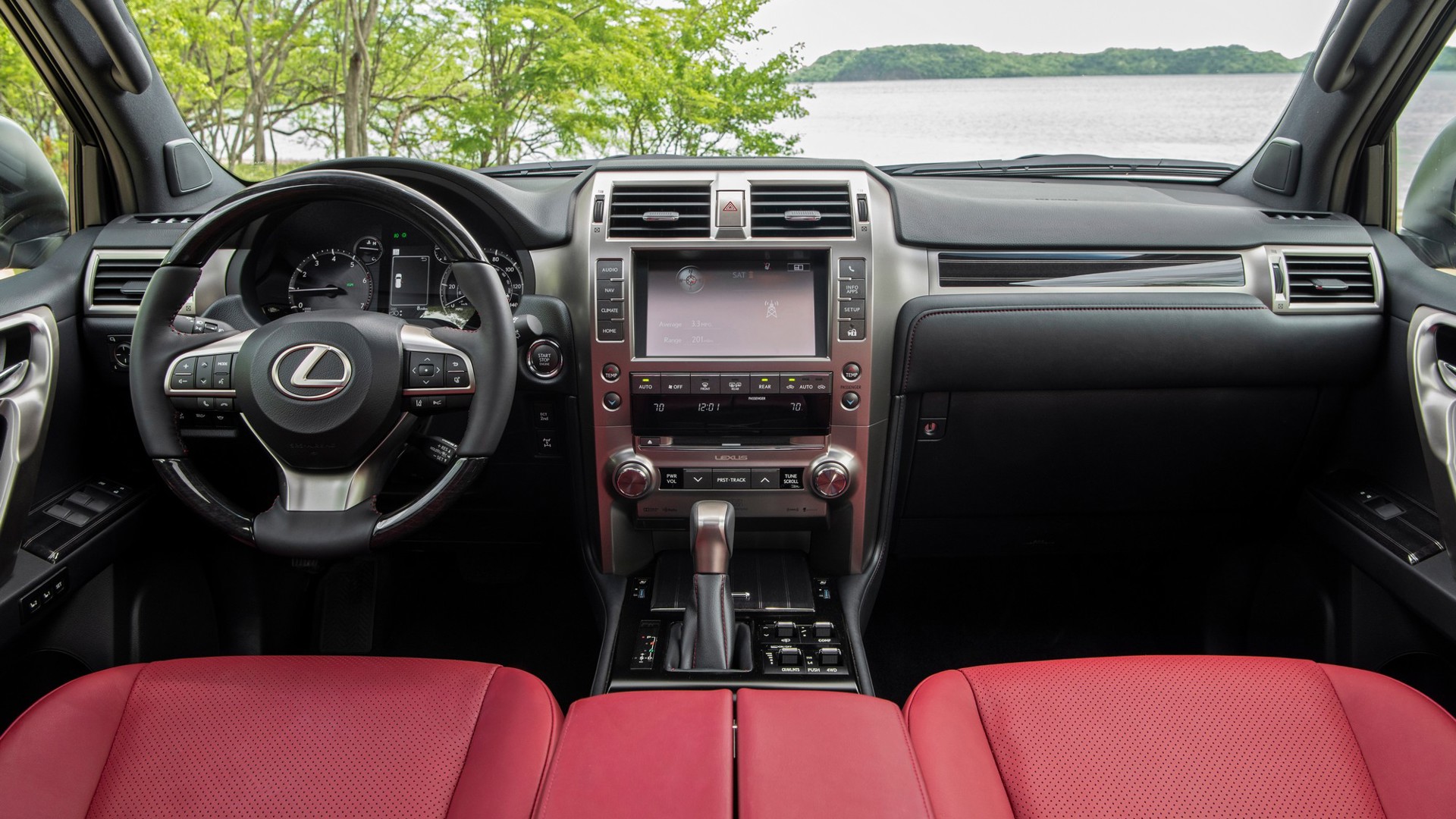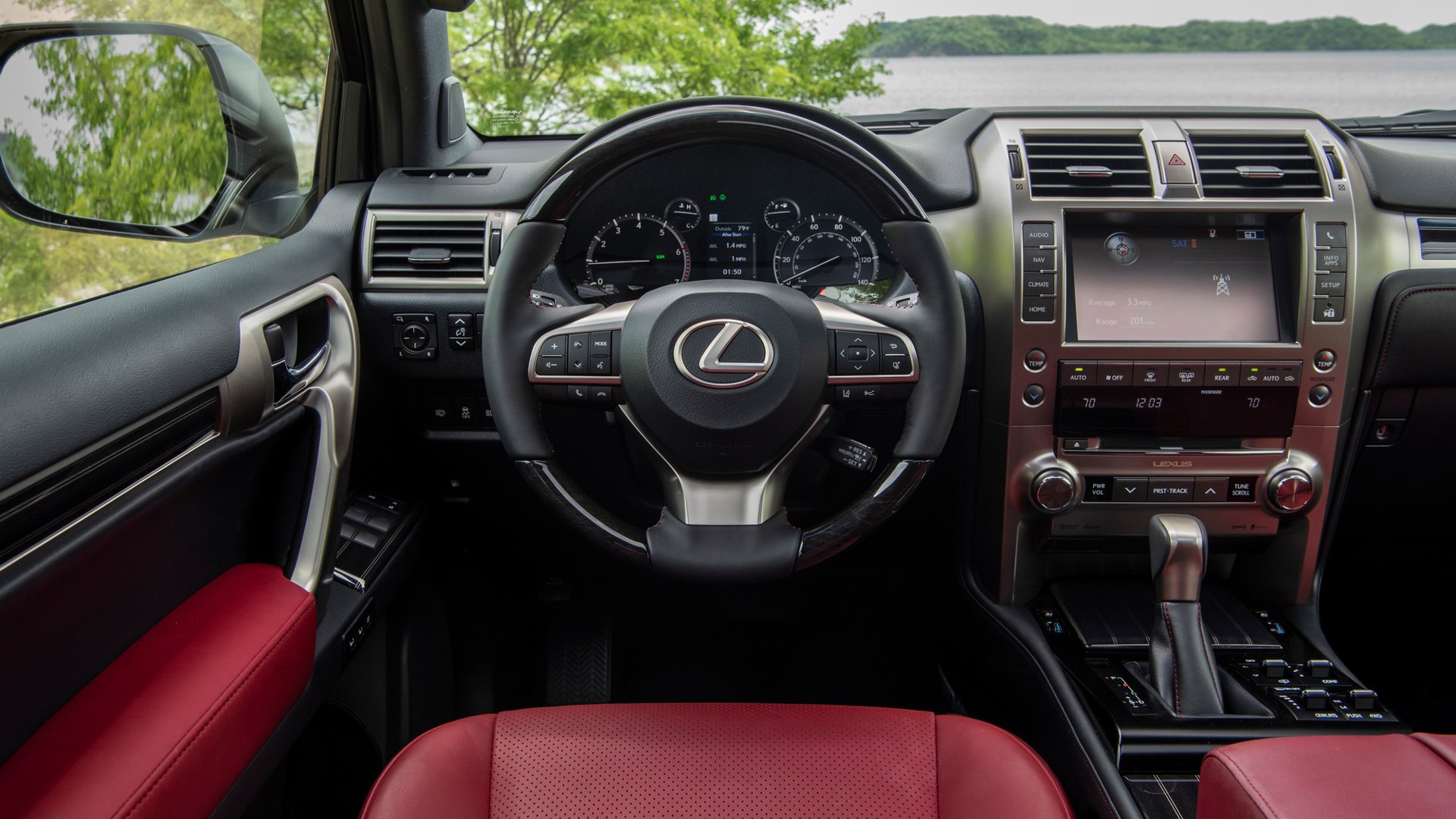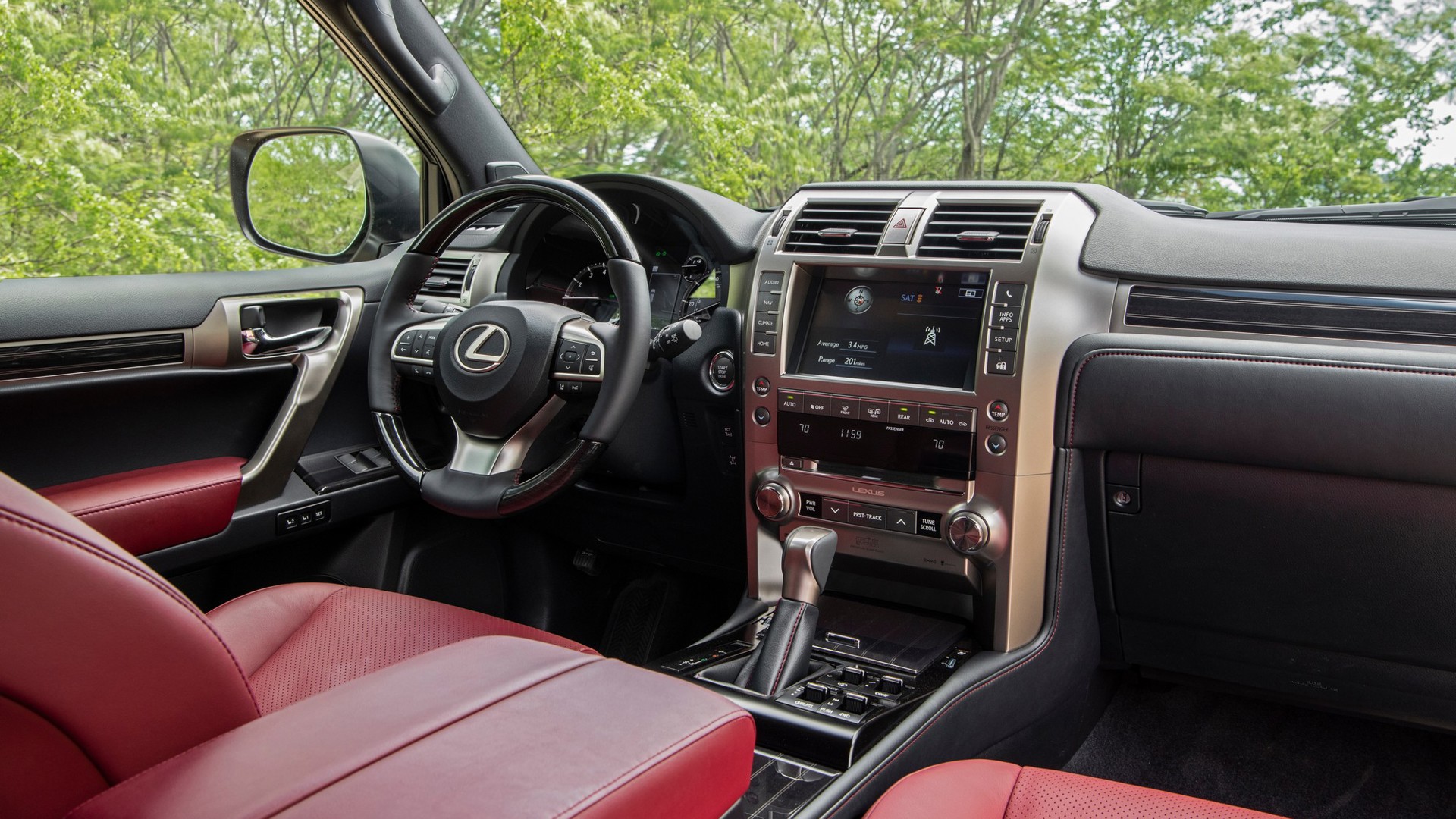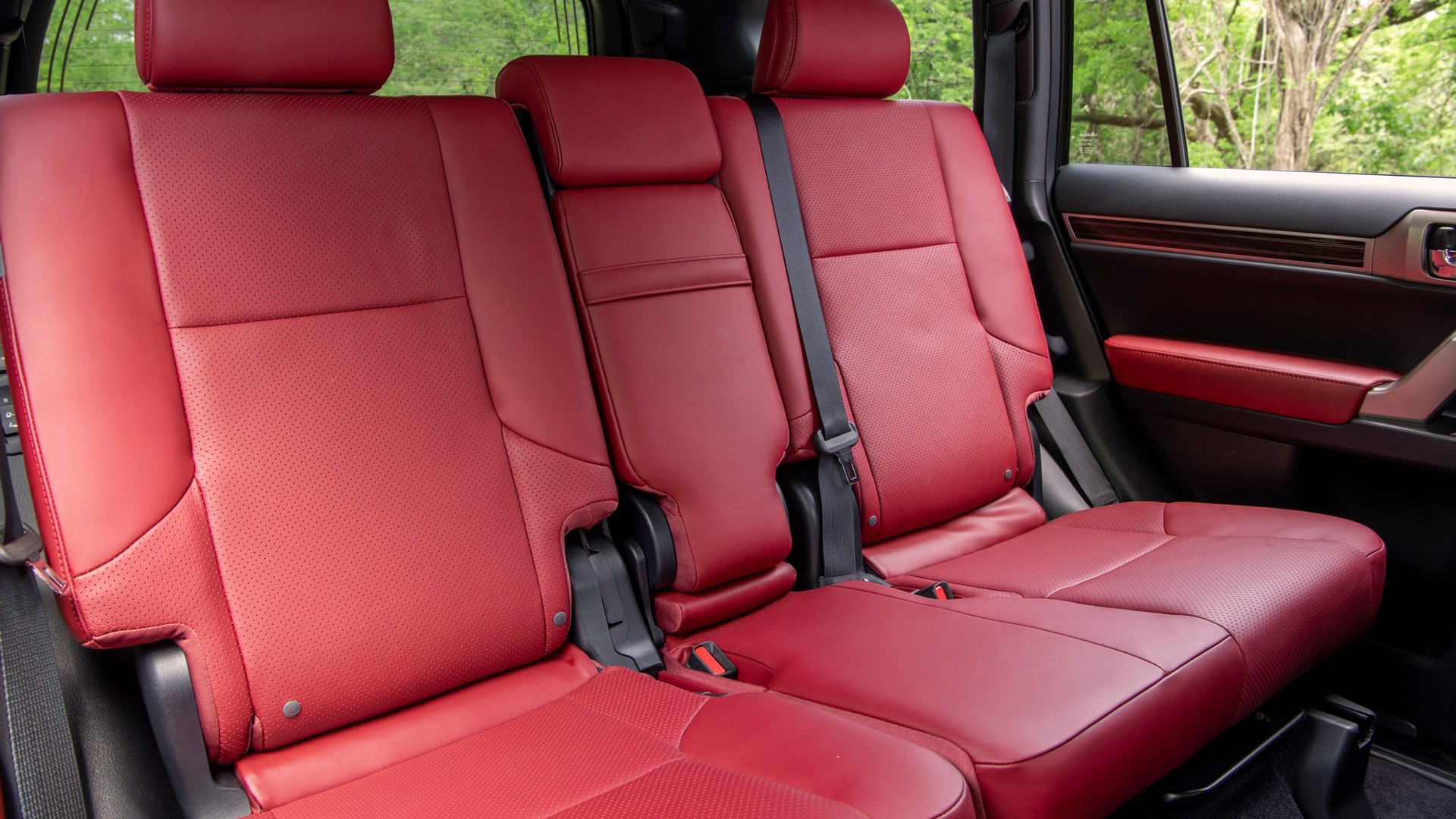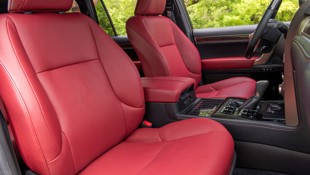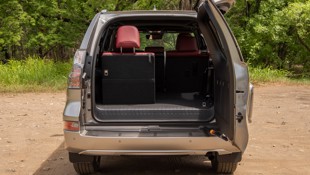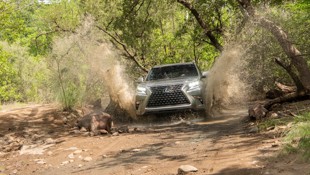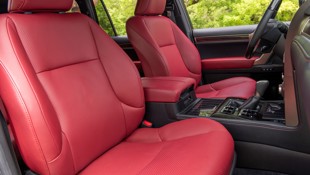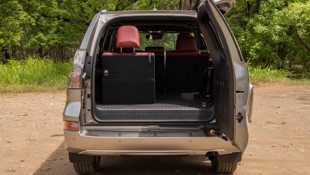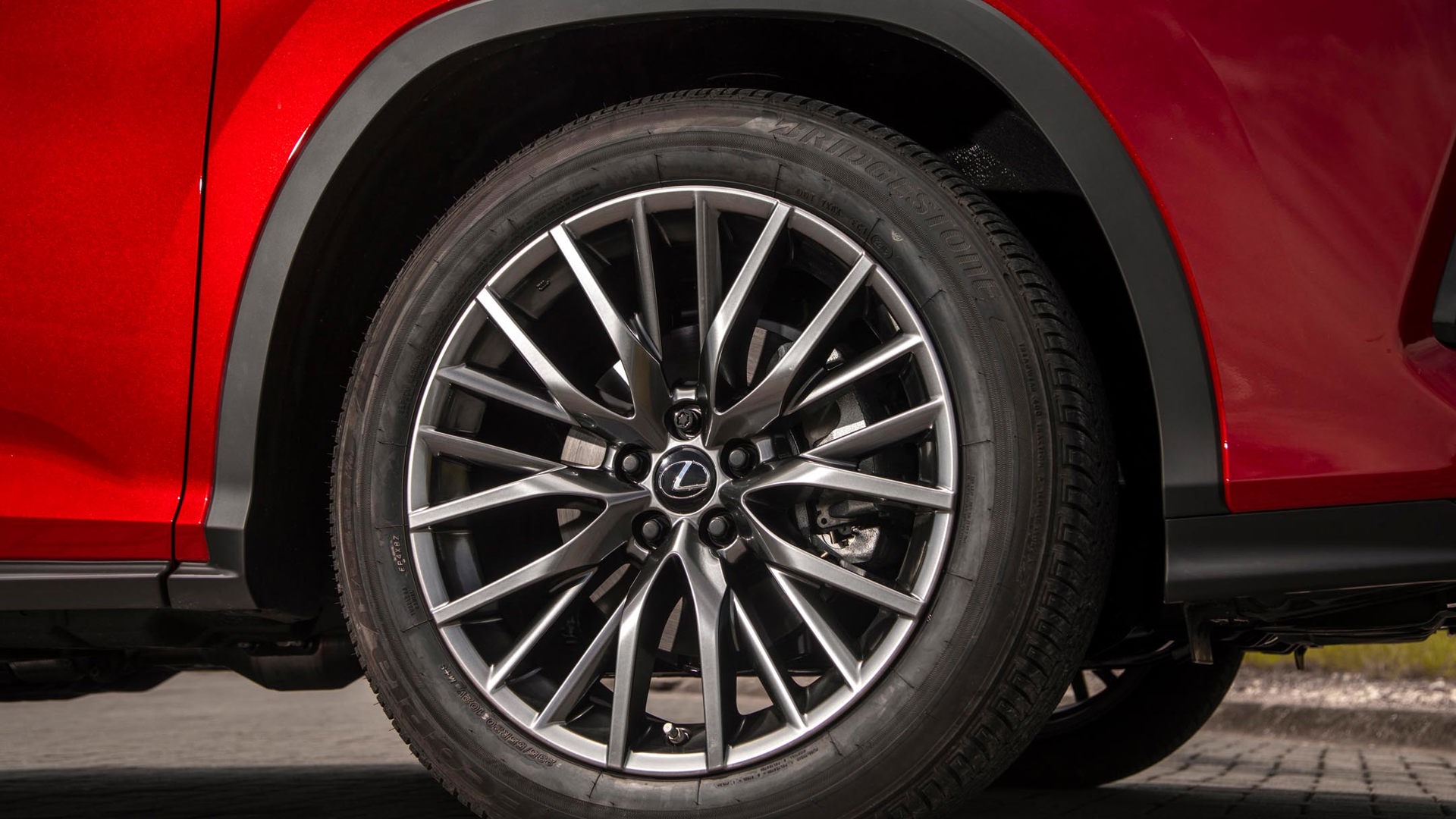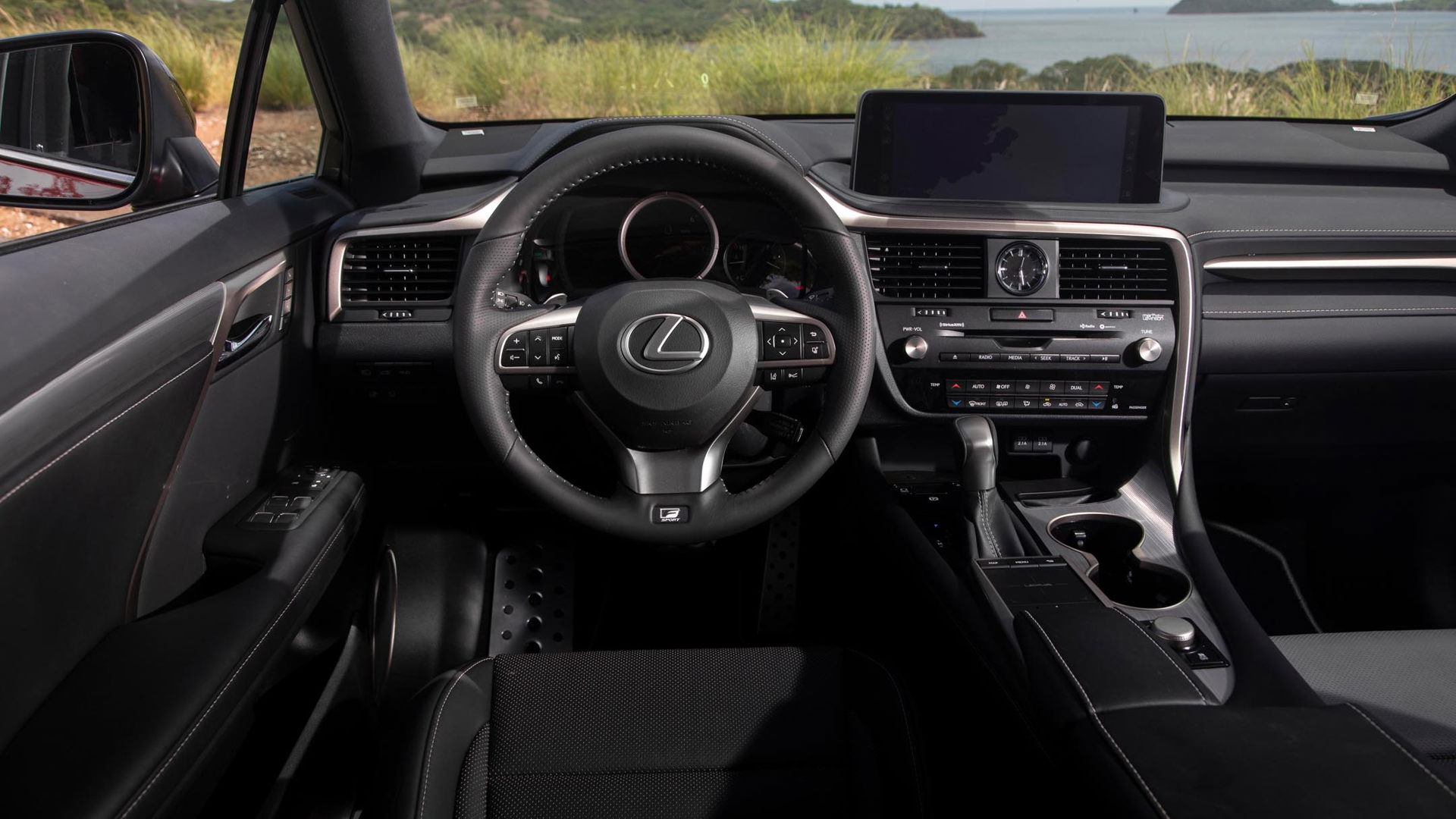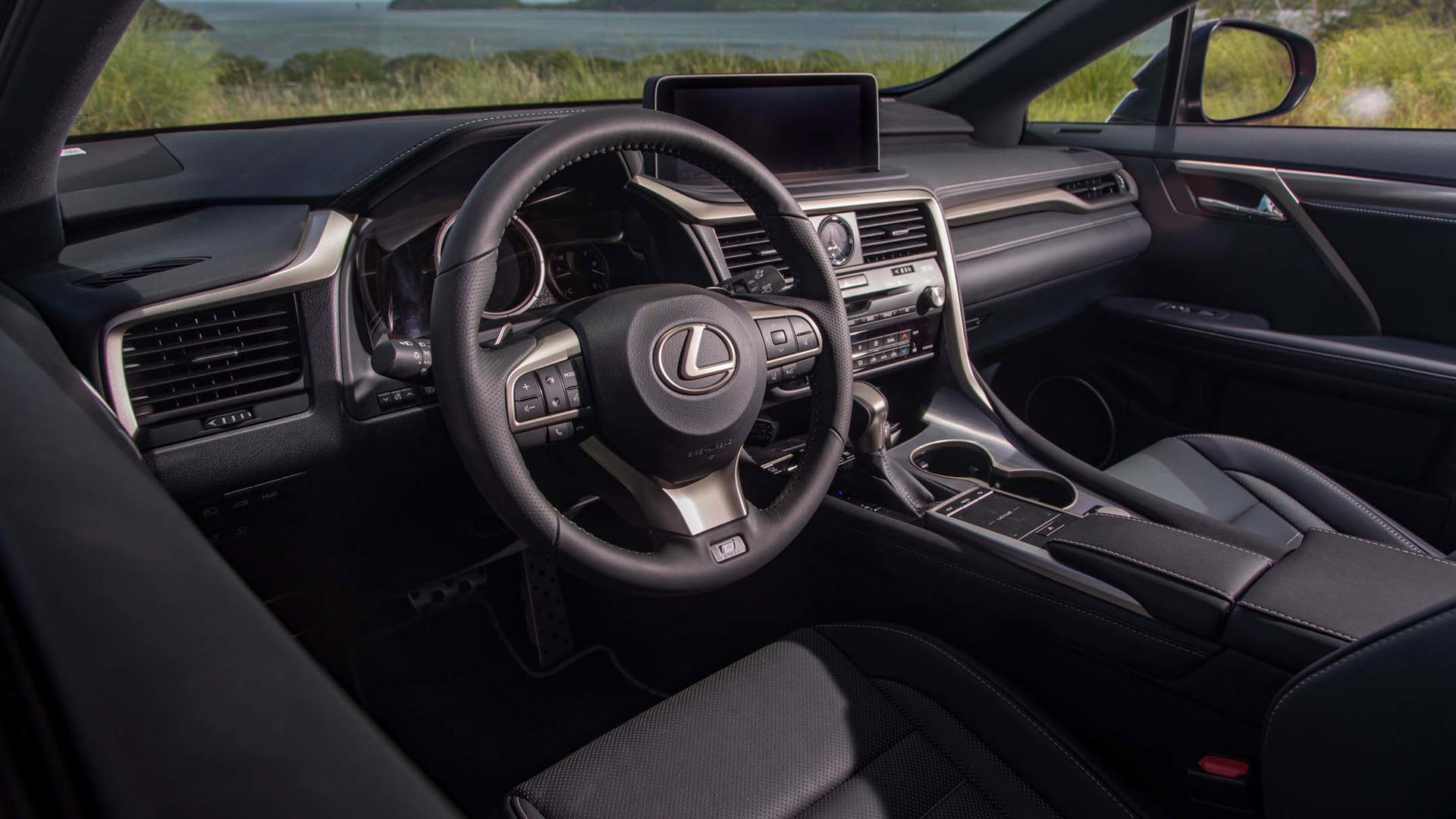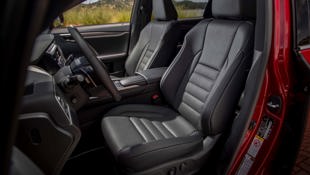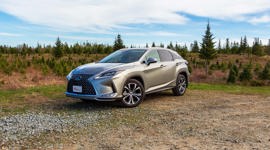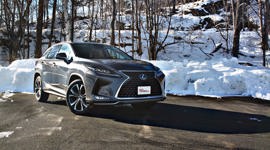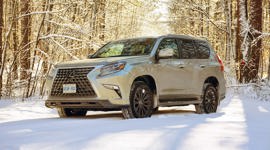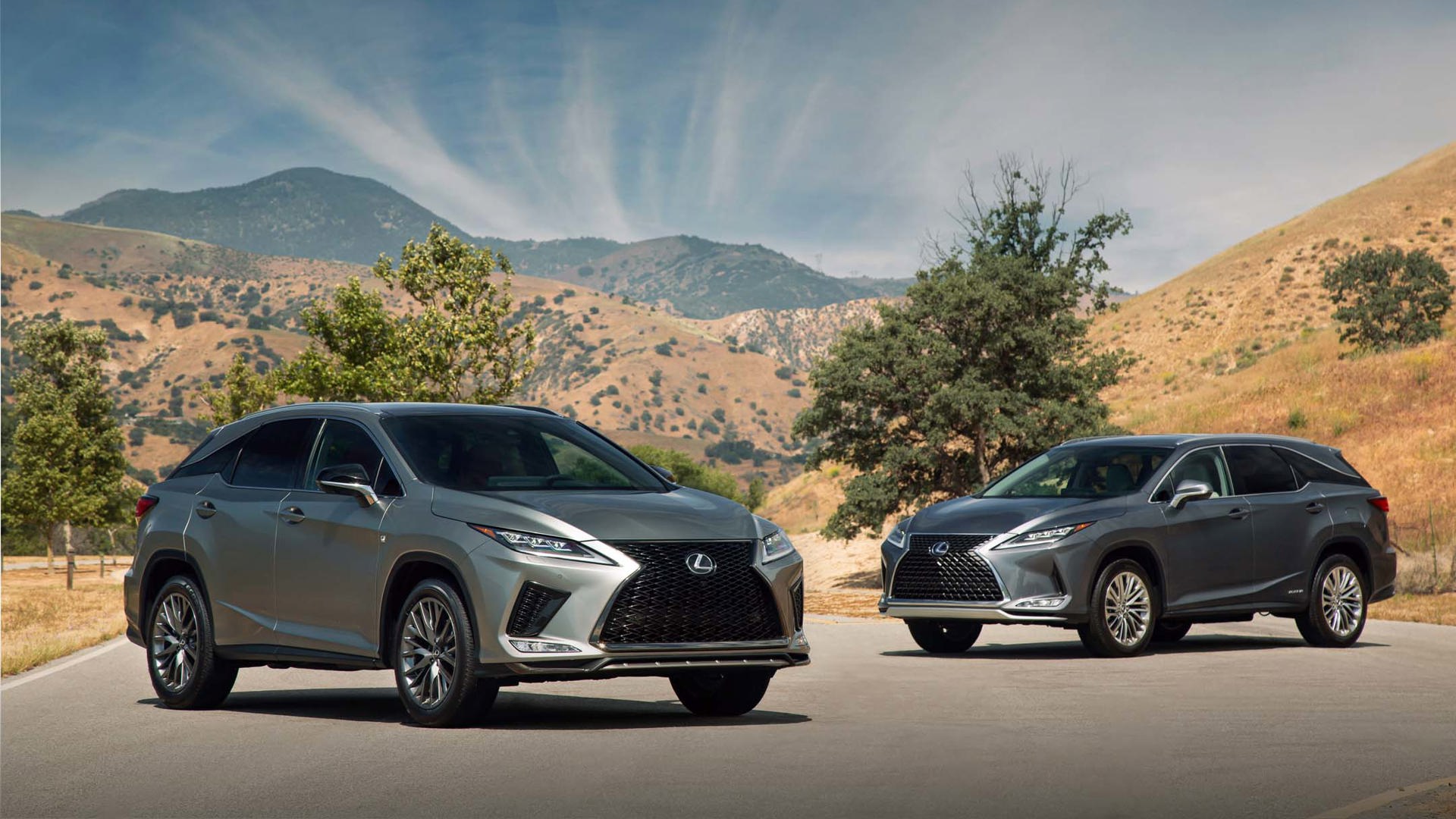Part of the Lexus Milestones event was a chance to drive the automaker's entire lineup. Well, most of the lineup, at least. It included the 2020 Lexus RX and 2020 Lexus GX crossovers, both having received Lexus calls minor changes. That means no new stampings – usually. The RX 350 and 450h are an exception, getting a few sheet-metal changes; but the GX, a thoroughly traditional SUV, sees only smaller changes.
2020 Lexus GX: Holding the line
In a world of crossovers, the GX remains firmly an SUV. It's a body-on-frame model with a big V8 under the hood. It's also far more capable off-road than you'd expect any Lexus to be, offering up a limited-slip and locking center differential, low-range transfer case, and a host of electronic dirt driver aids like downhill assist.
For 2020, the Lexus GX gets a mild update. That means largely, and we do mean largely, a revised front grille. The spindle isn't bigger, but it certainly looks like it is, with lots of new texture inside the outline. Framing that restyled grille are equally new headlights. They put a sharper angle on the Lexus L accent light, making it look more aggressive. The lights are now LED as standard, too.
On the tech front, this, the oldest of the Lexus line, finally receives the full set of Lexus Safety System+ active safety features. It's the last Lexus model to get them as standard across the board. New features this year are: lane-departure warnings, auto high-beams, adaptive cruise, and pre-collision warning with pedestrian detection.
Lexus has also added some more off-roady bits, like the Multi-Terrain Monitor and Panoramic View Monitor. They let you see around the vehicle off-road. So you know exactly where that boulder is once it disappears under your hood, and you can see if there's another vehicle ahead as soon as the nose starts to crest a hill. The new crawl control is like cruise control for the dirt, letting the GX pull itself forward uphill as well as down. Finally, Multi-Terrain Select adds five drive modes to help modulate throttle and brakes on five different terrain types.
The driving bits, meanwhile, are unchanged: the same 4.6L V8 that makes 301 hp and a six-speed automatic transmission. There's the Kinetic Dynamic Suspension System and its cross-linking of the wheels to reduce roll and, along with the adaptive variable suspension, smooth out the ride – but there's no hiding that this is a real truck underneath. Like the larger LX, for many buyers that's exactly what they want. Think of this as a luxury 4Runner and you've got the idea.
2020 Lexus RX: More than meets the eye
The Lexus RX is the biggest seller for the brand, making up nearly 40 percent of the brand's sales in Canada – though the NX is quickly catching up.
It's the RX that gets more than just a minor change – and it's one you'll never see. It's not the revised front and rear fascias, or the triple-beam LED headlights; you'll definitely notice those. It's not the new 12.3-inch screen that finally adds Android Auto to Lexus – and it's a touchscreen to boot!
No, it's inside the skin. Lexus has made an effort to make the RX more dynamic, and that starts with making the body shell more rigid.
How do you make a modern car more rigid in the middle of the lifecycle of the product? Laser screw welds. It's a new technique that the automaker debuted on the LS. It's like a spot weld but done with a laser. Because the laser works faster, it transmits less heat, and they can put more of them closer together without the risk of warping the structure. More welds means better stiffness. Lexus has also added massive quantities of structural adhesive, up from 4 m to 30 m in the 2020 RX. That adhesive cuts down on road noise and vibration while increasing twist resistance.
That's not all, though. The refreshed RX picks up some big suspension changes. Front and rear roll bars are both thicker in diameter, which further reduces roll, and are hollow, which reduces weight for improved ride. The shocks are re-tuned to work with the new bars and they've added a new device Lexus says reduces high-frequency vibrations. Finally, Lexus has added active corner braking. It grabs the inside tire to add stability and reduce understeer.
Hybrid high-jinks
So how does it work on the road? Well, it's tough to say how much the ride was improved, because the Costa Rican asphalt looked to have been laid just weeks before our arrival. In short, it was perfect. Not great for suspension testing, but great for the locals who appeared to have no shocks at all, and who evidently were still expecting a cratered road and so drove down the centre-line at all times.
In the twisty hill climbs, though, the RX felt very planted – and dare I say, fun to throw into downhill bends. On the few bits of damaged road I was able to find, the RX rode as softly as a Lexus should, but it was also a willing participant in back-road high-jinks. That feeling was boosted by the engine in the hybrid driveline.
That's right, the hybrid motor and gas engine made things more fun. First, the electric torque applied directly to the rear wheels helped with the vehicle's balance. Then, the 3.5L V6 climbed in revs and took on a delightful growl. Depending on the application, the corporate 3.5L V6 isn't always ready for fun, but here in the RX 450h, it was more than happy to add aural feedback to the party along with thrust. It was enough that I was looking to see if the RX had gained the artificial noisemaker of the RC 350. I couldn't find the button, so I'm guessing not.
Fewer distractions, more safety
If you don't care about driving, you'll probably appreciate the new infotainment system. There's an optional 12.3-inch touchscreen so you don't have to use the Remote Touch pad, and the RX gets CarPlay and Android Auto. Better yet, it's one of the first models to get the new widescreen Android Auto interface. Using the new touchscreen is far easier than the remote pad. And if you're thinking that the RX screen is too far away for most arms, they've moved it more than 100 mm closer to the driver.
Lexus has also added some new features to the safety system to make Lexus Safety System+ 2.0. Fortunately, we didn't get to test them out, but it includes daytime cyclist detection plus low-light pedestrian detection. There's also a new lane-trace assist that's designed to work with the radar cruise control to keep you centred between the lines. Since our route's roads didn't have lines, we weren't able to check that one out.
The 2020 revision doesn't add anything groundbreaking to the RX, but then again, it's not supposed to. What it adds are some very useful features for the day-to-day, like the safety bits and the new screen. It also makes it more fun to drive without making it so stiff that it pushes away existing brand loyalists.
This new RX is just the Rx for those looking for a luxury crossover – the same winning formulation the company launched back in 1997.
